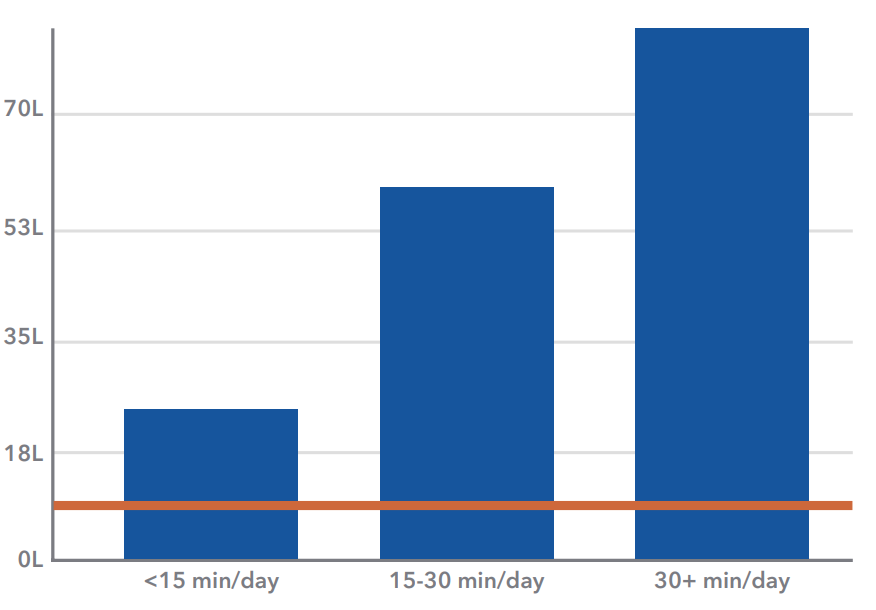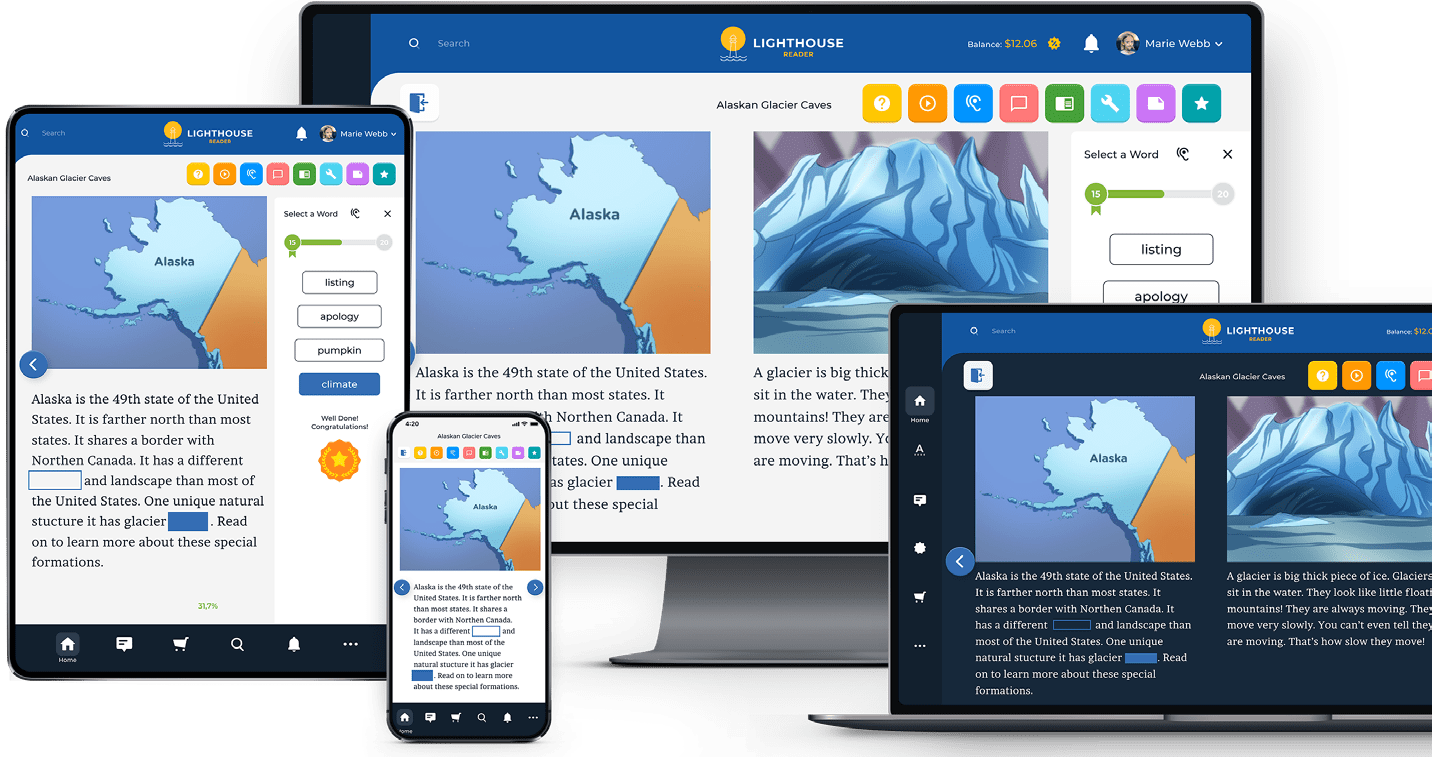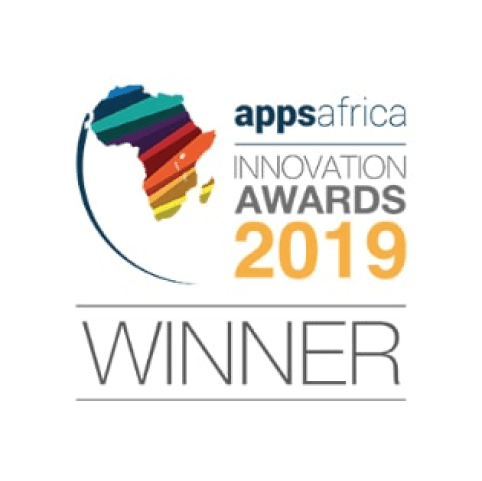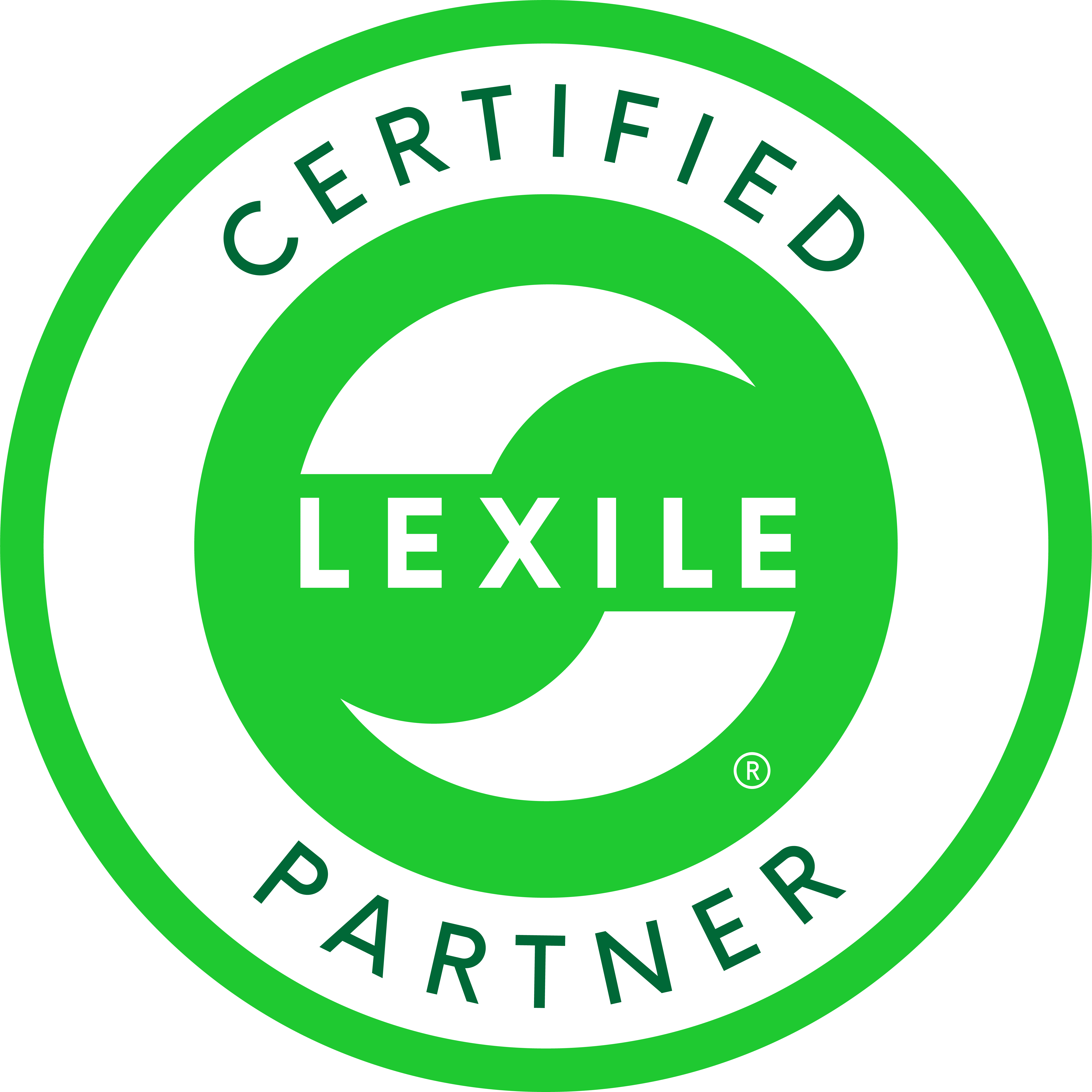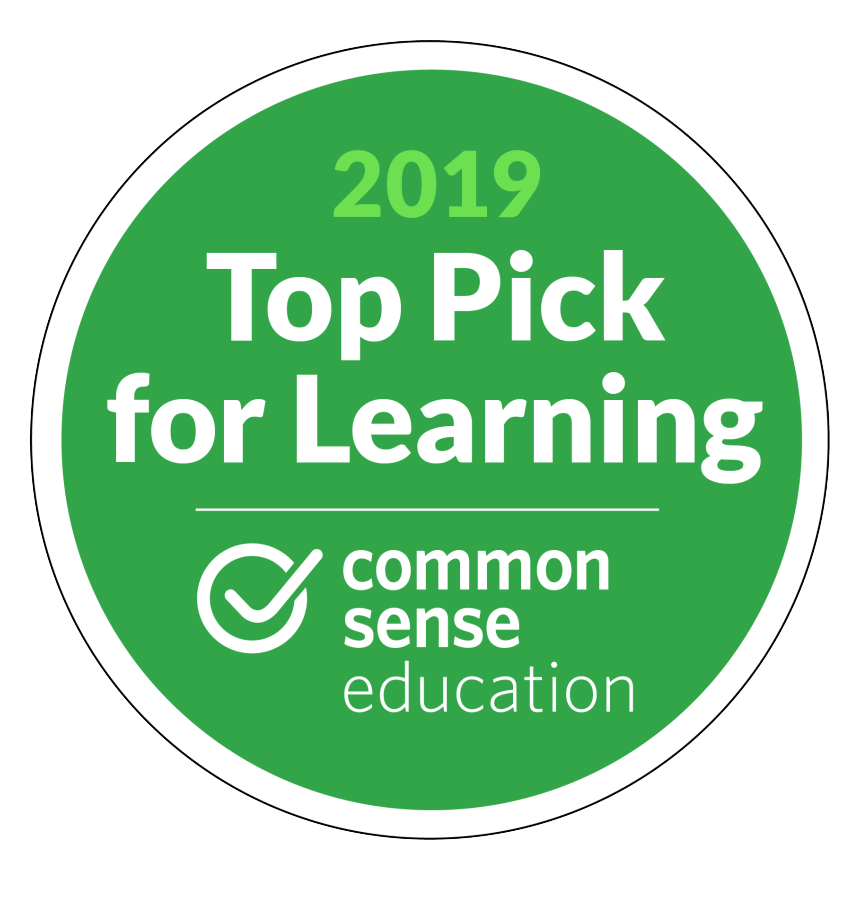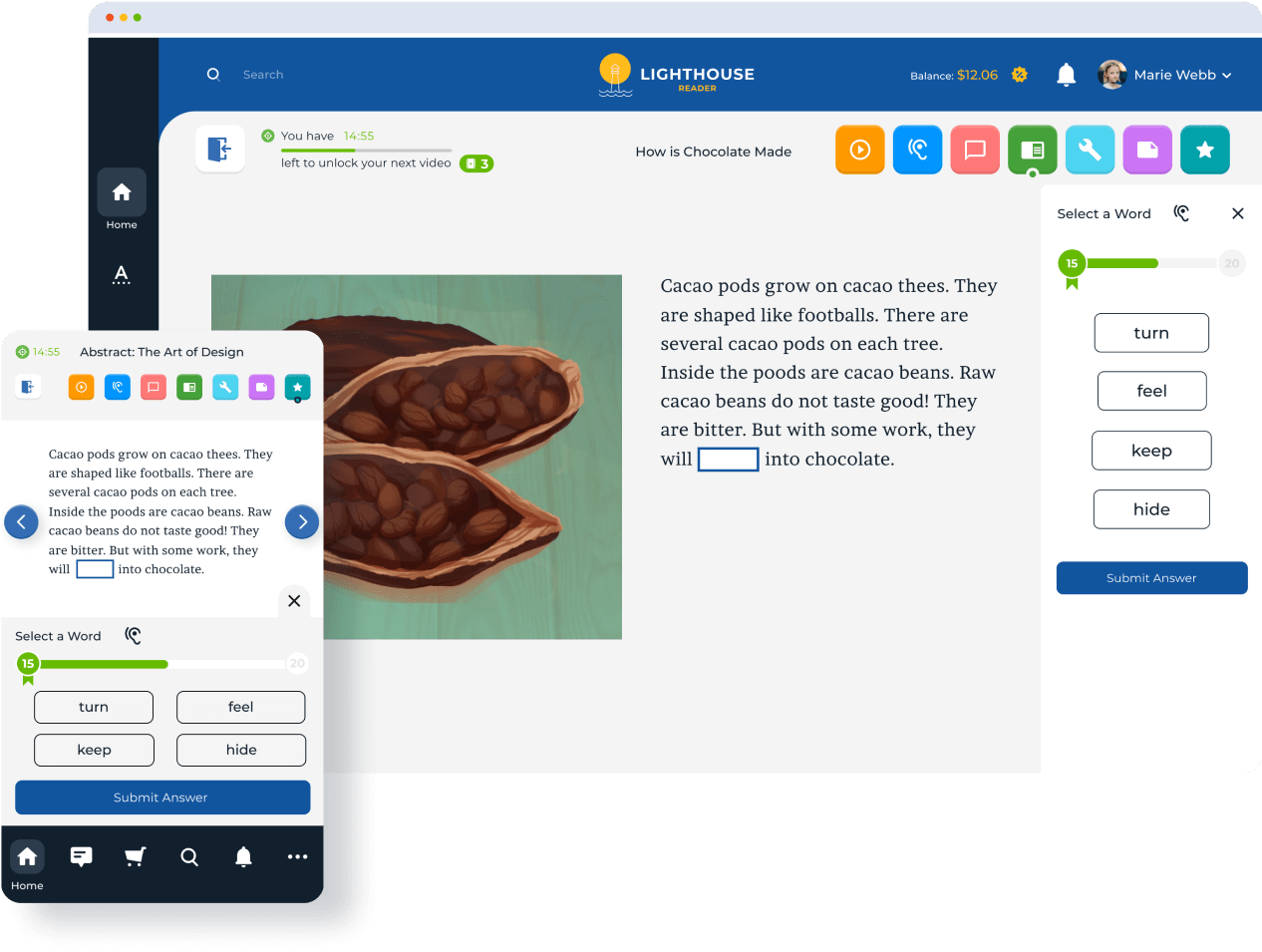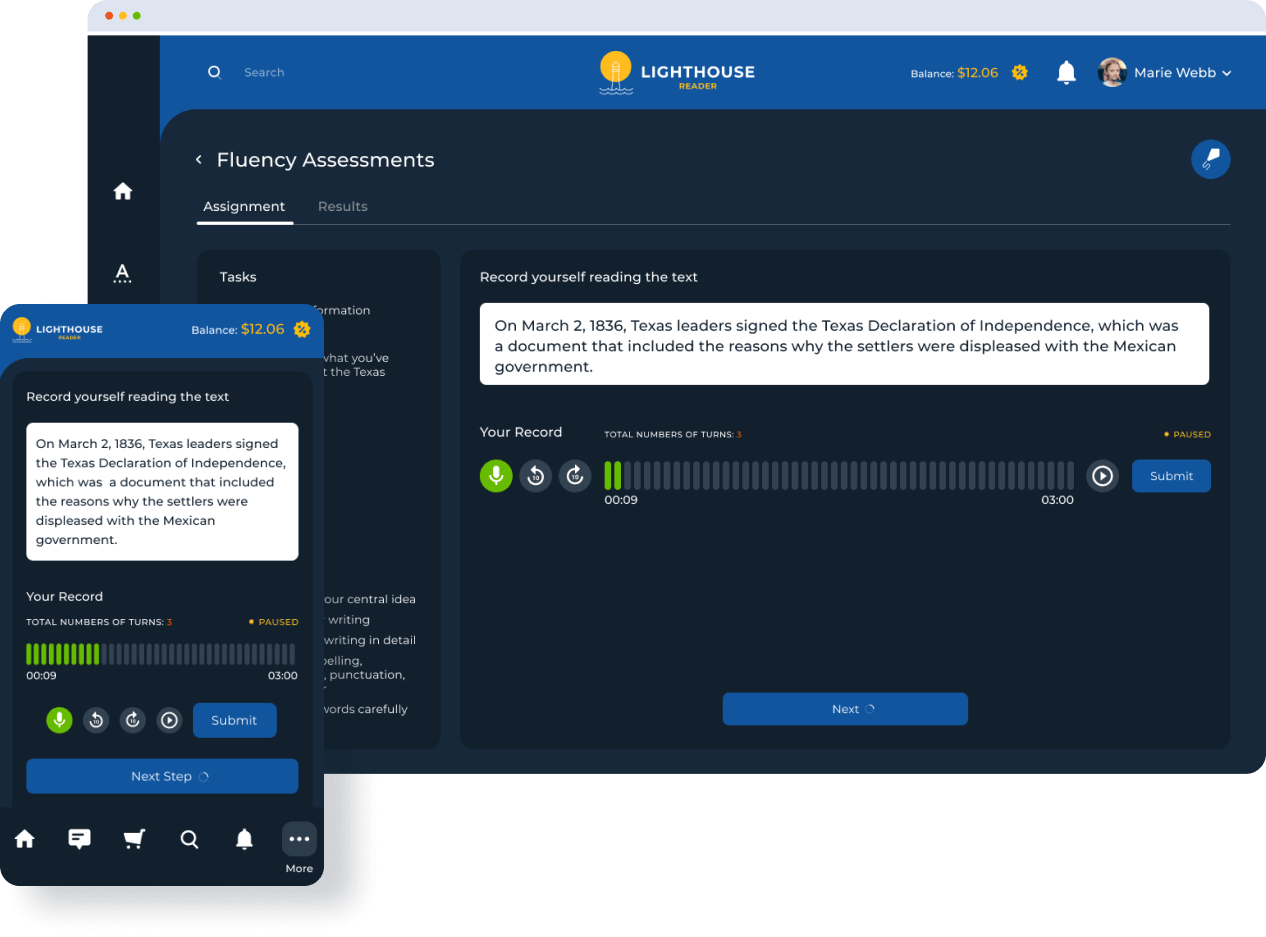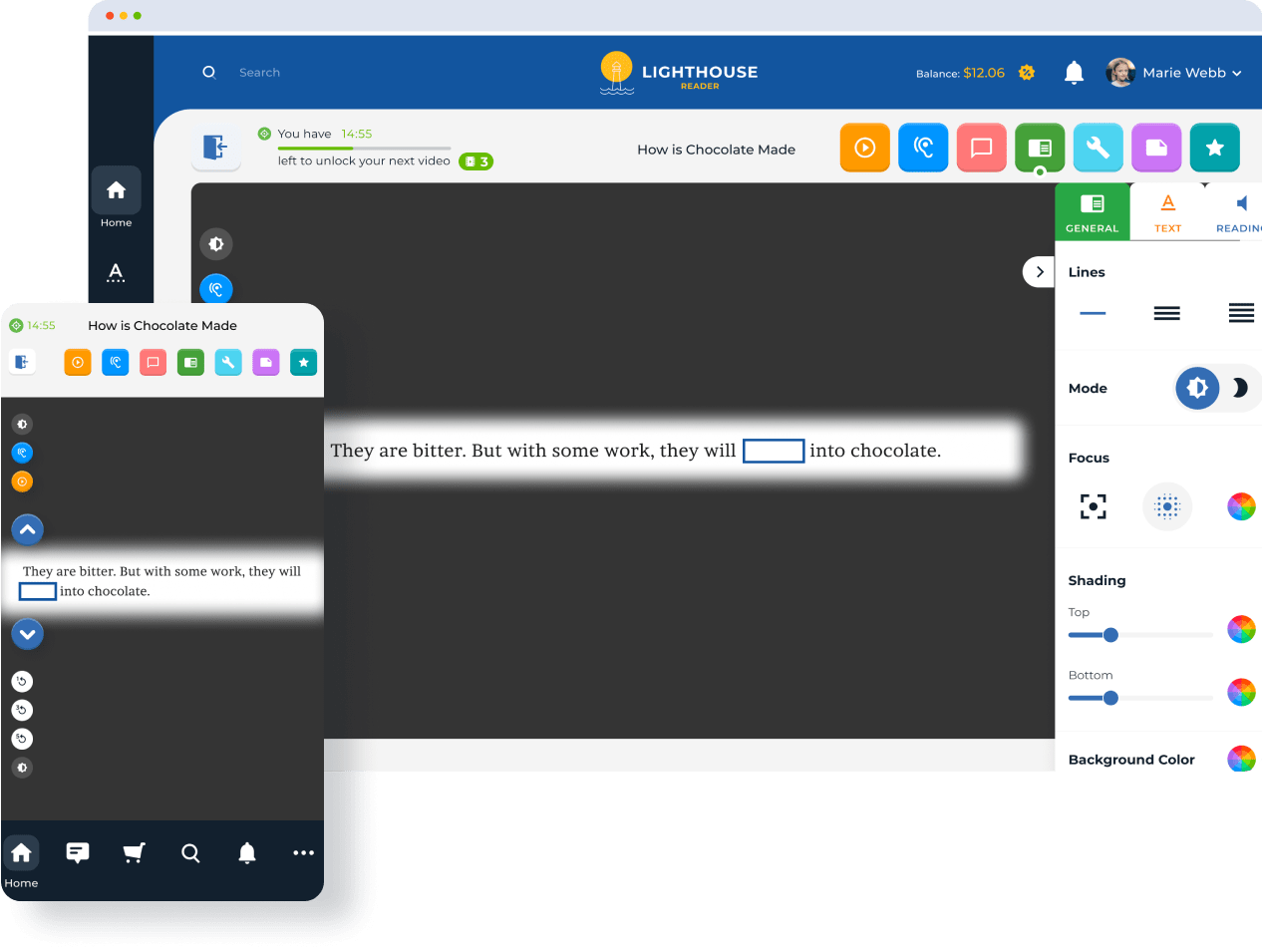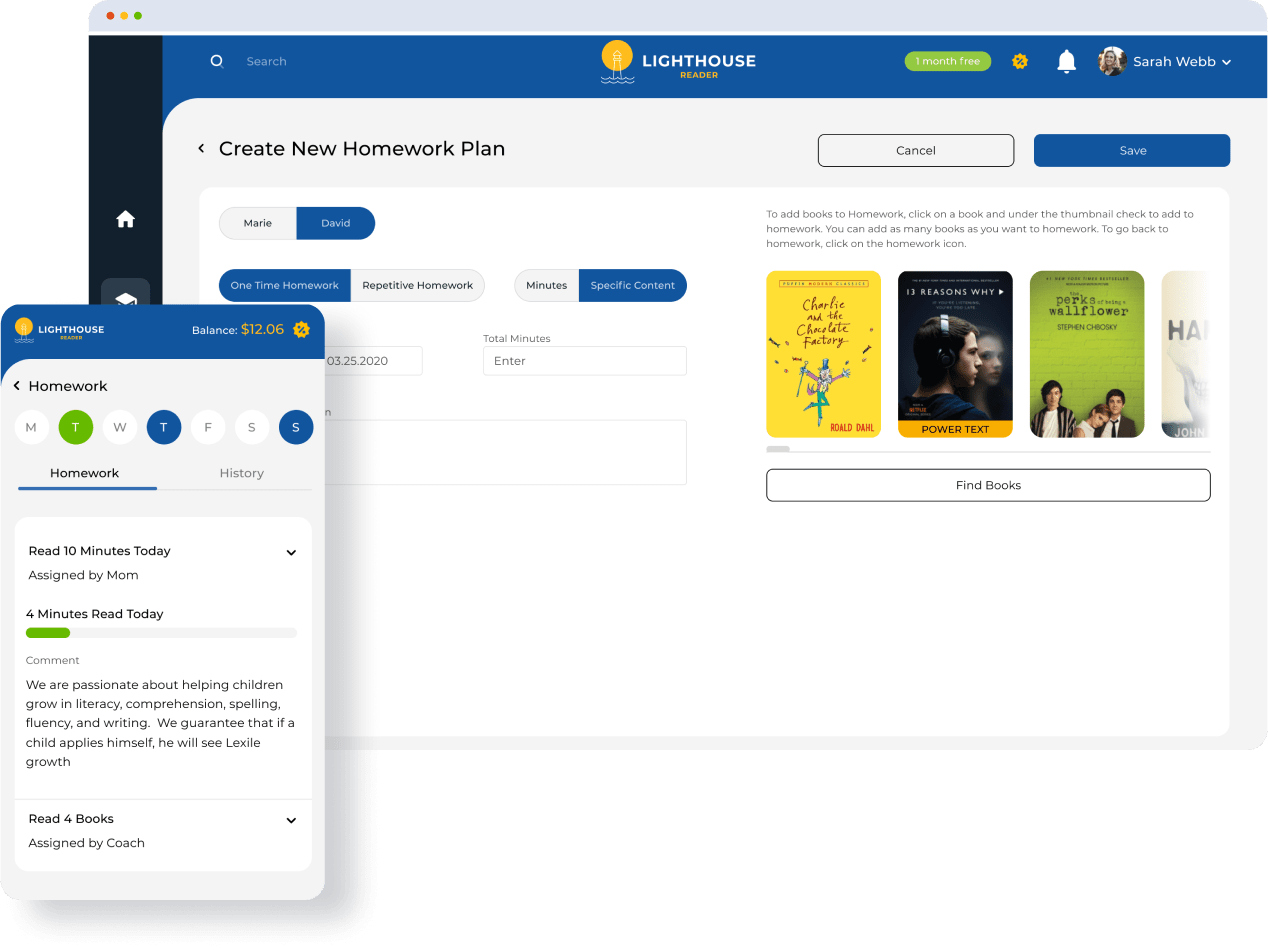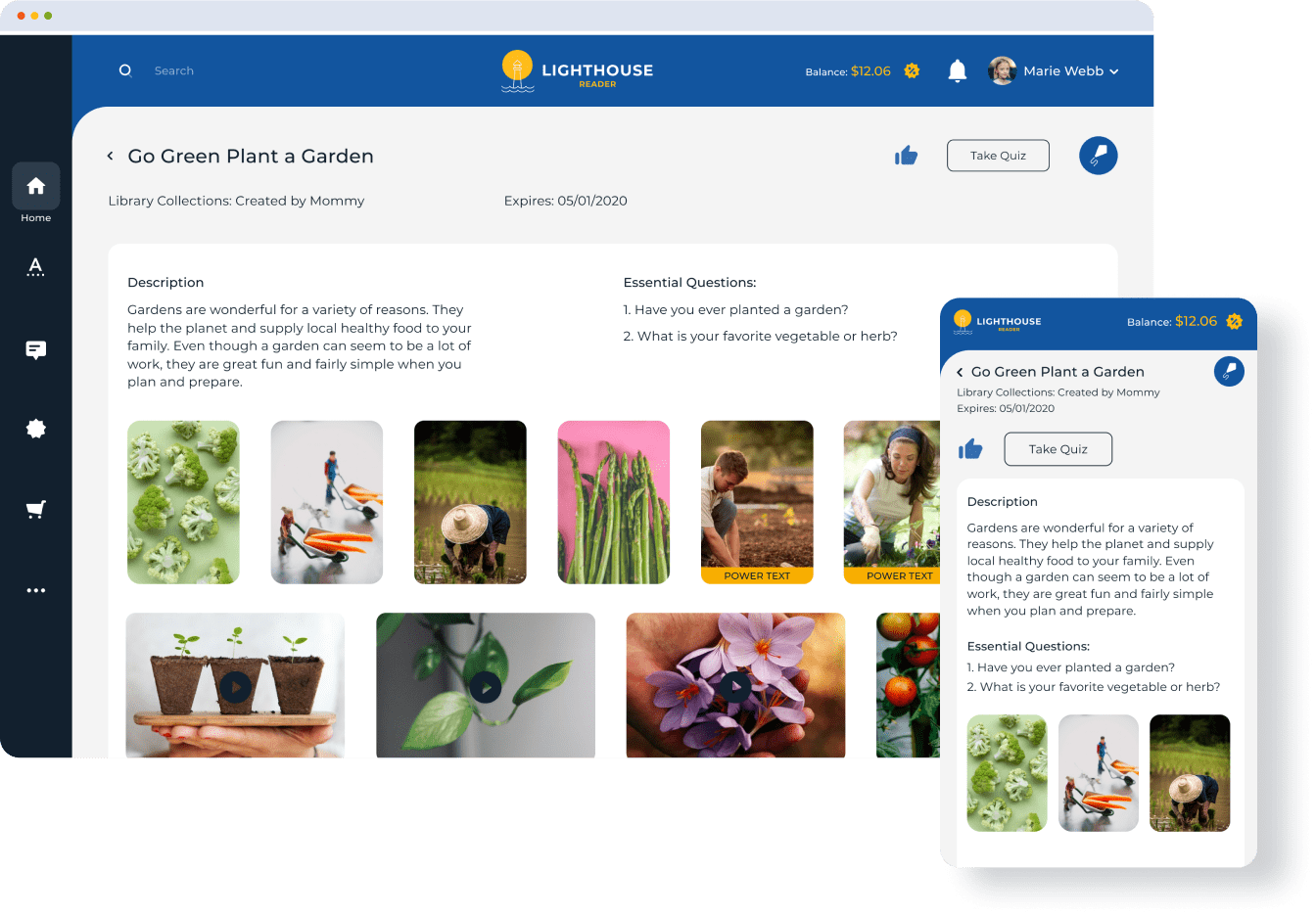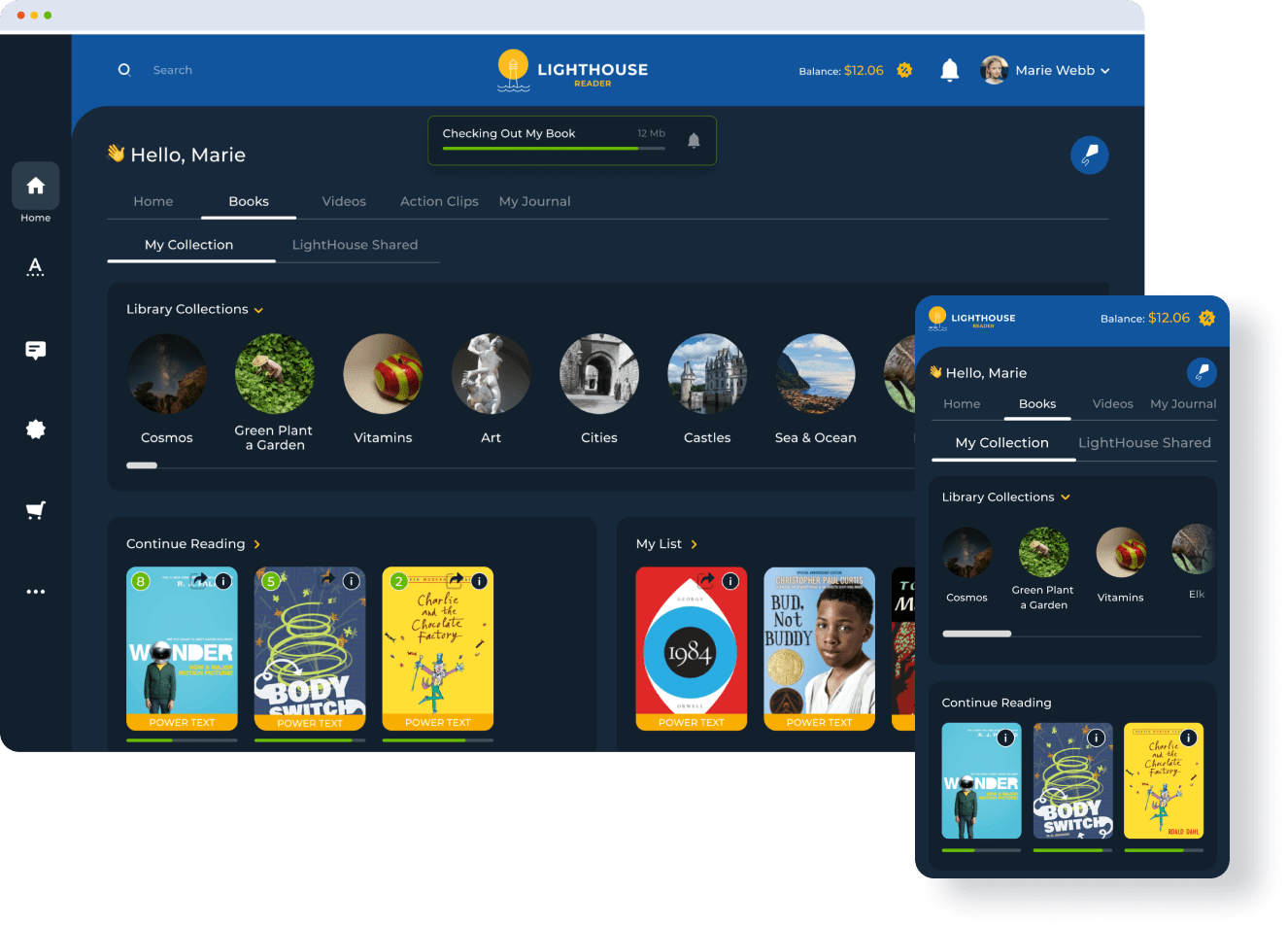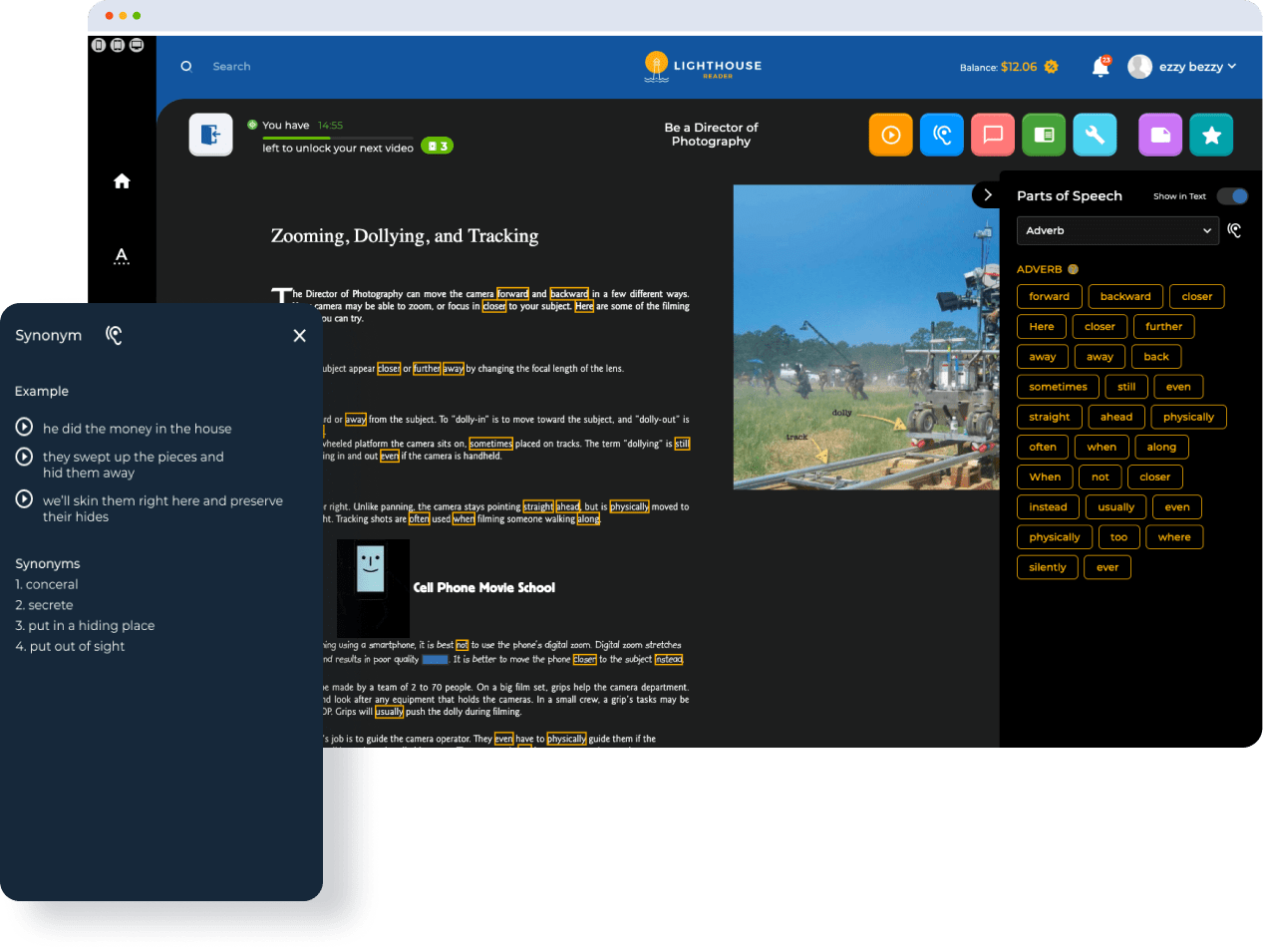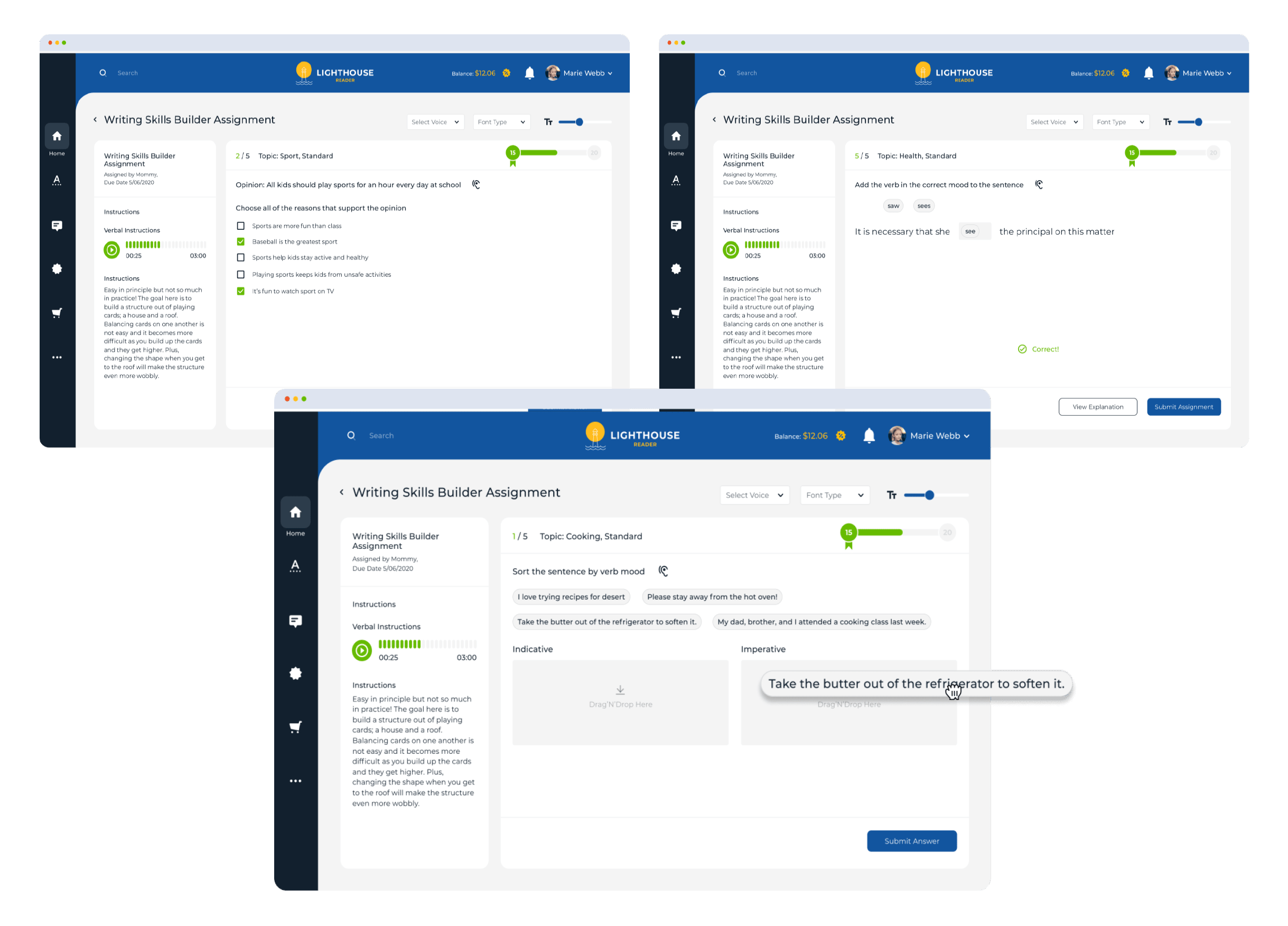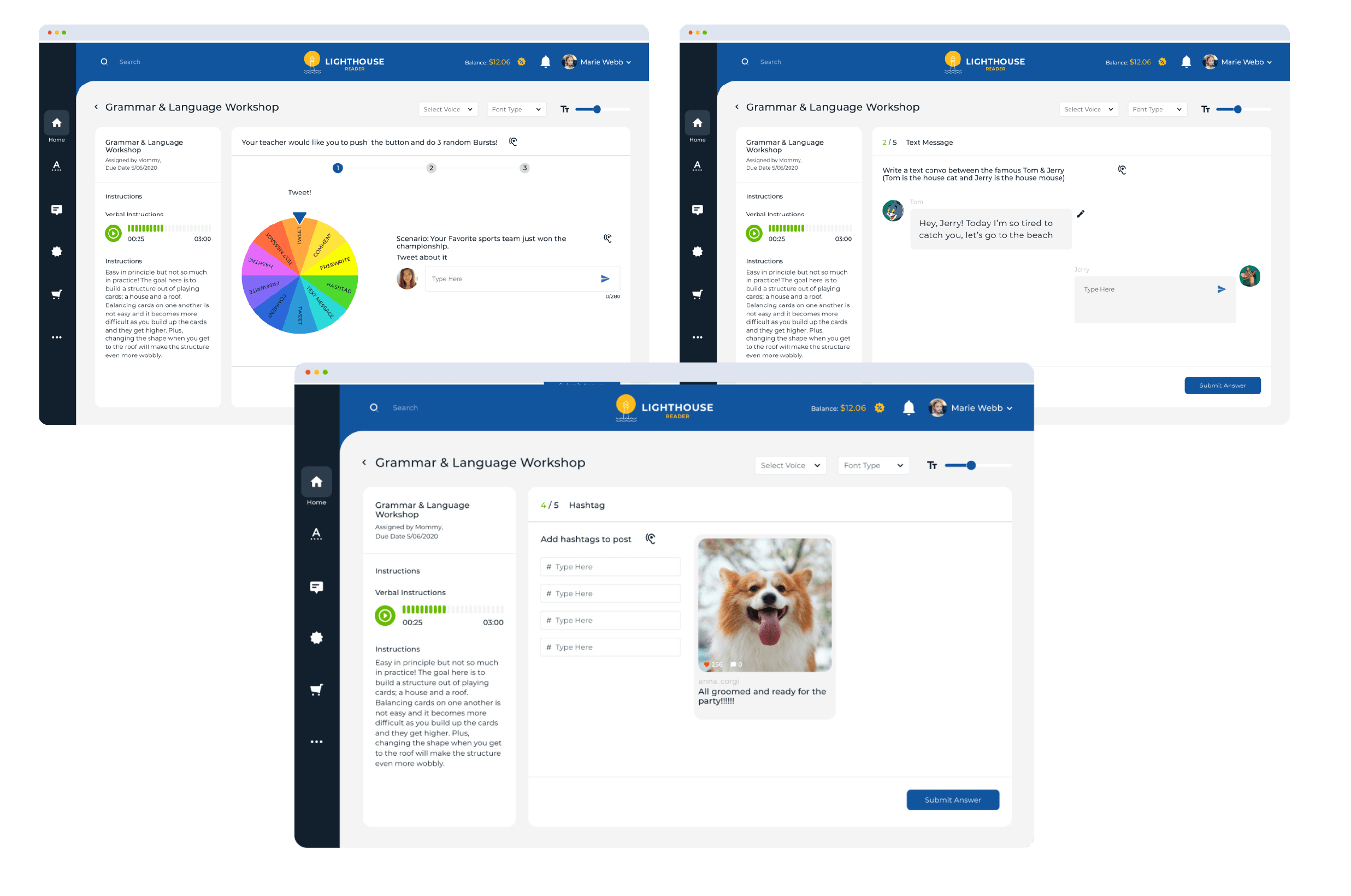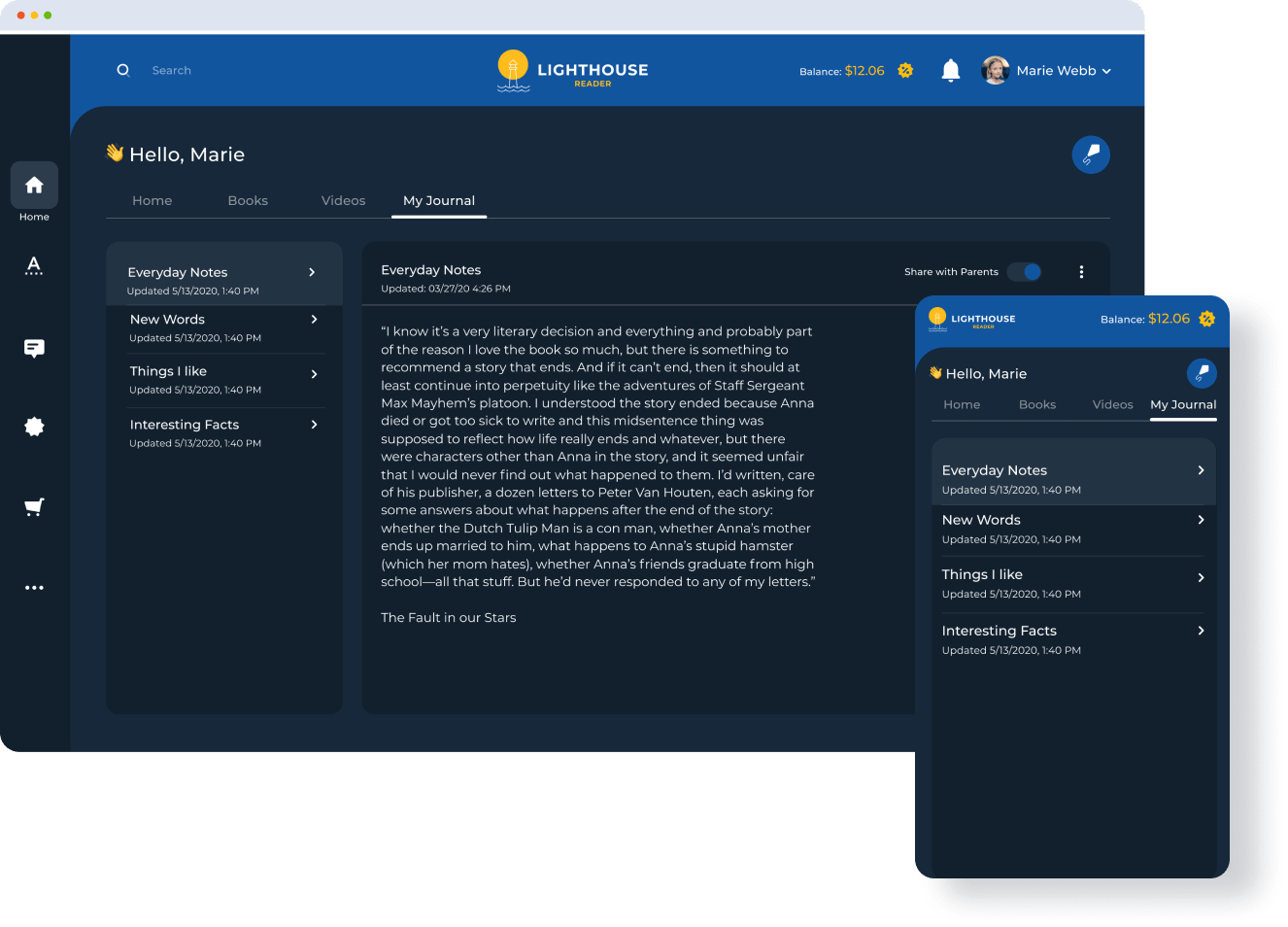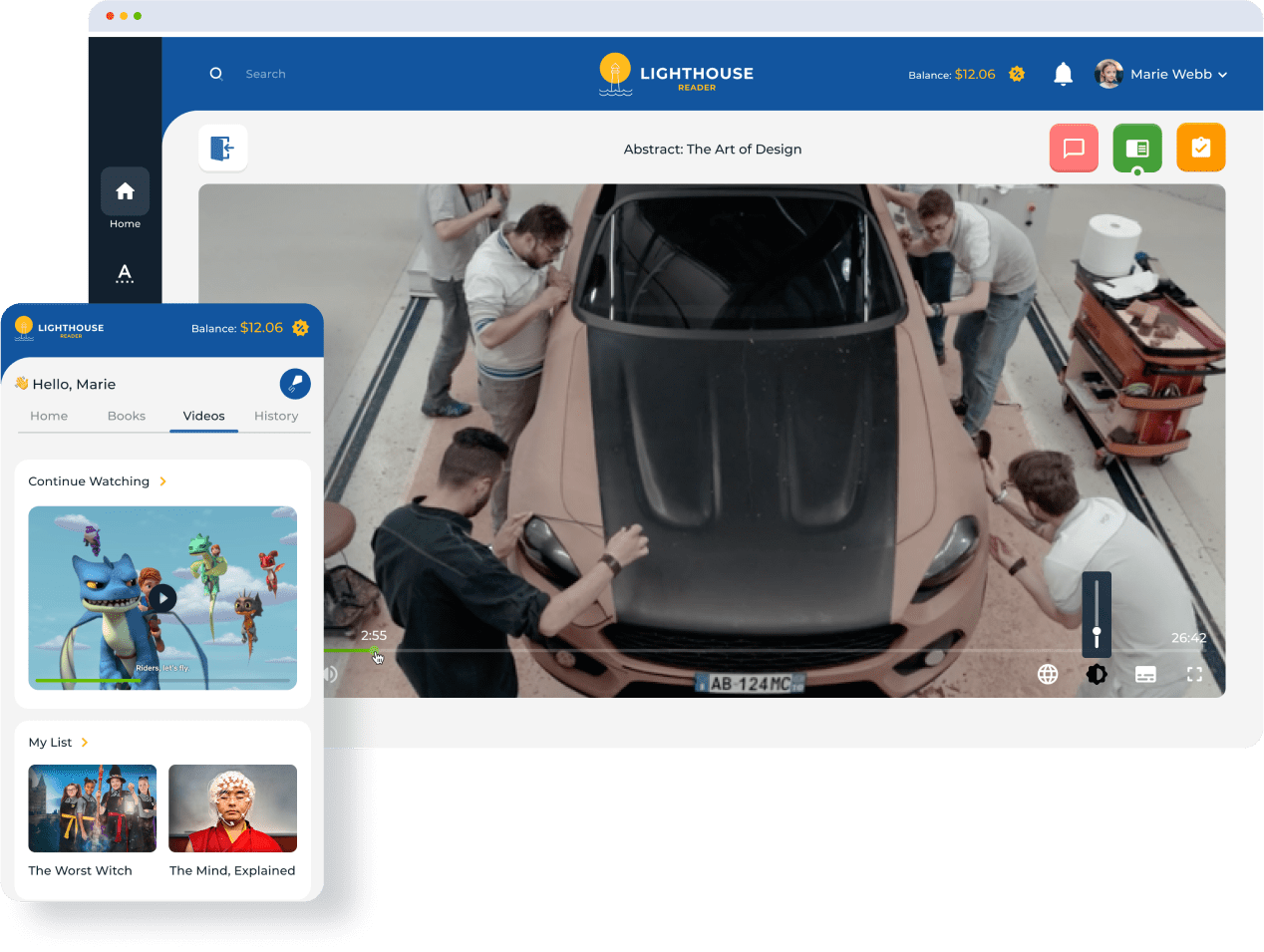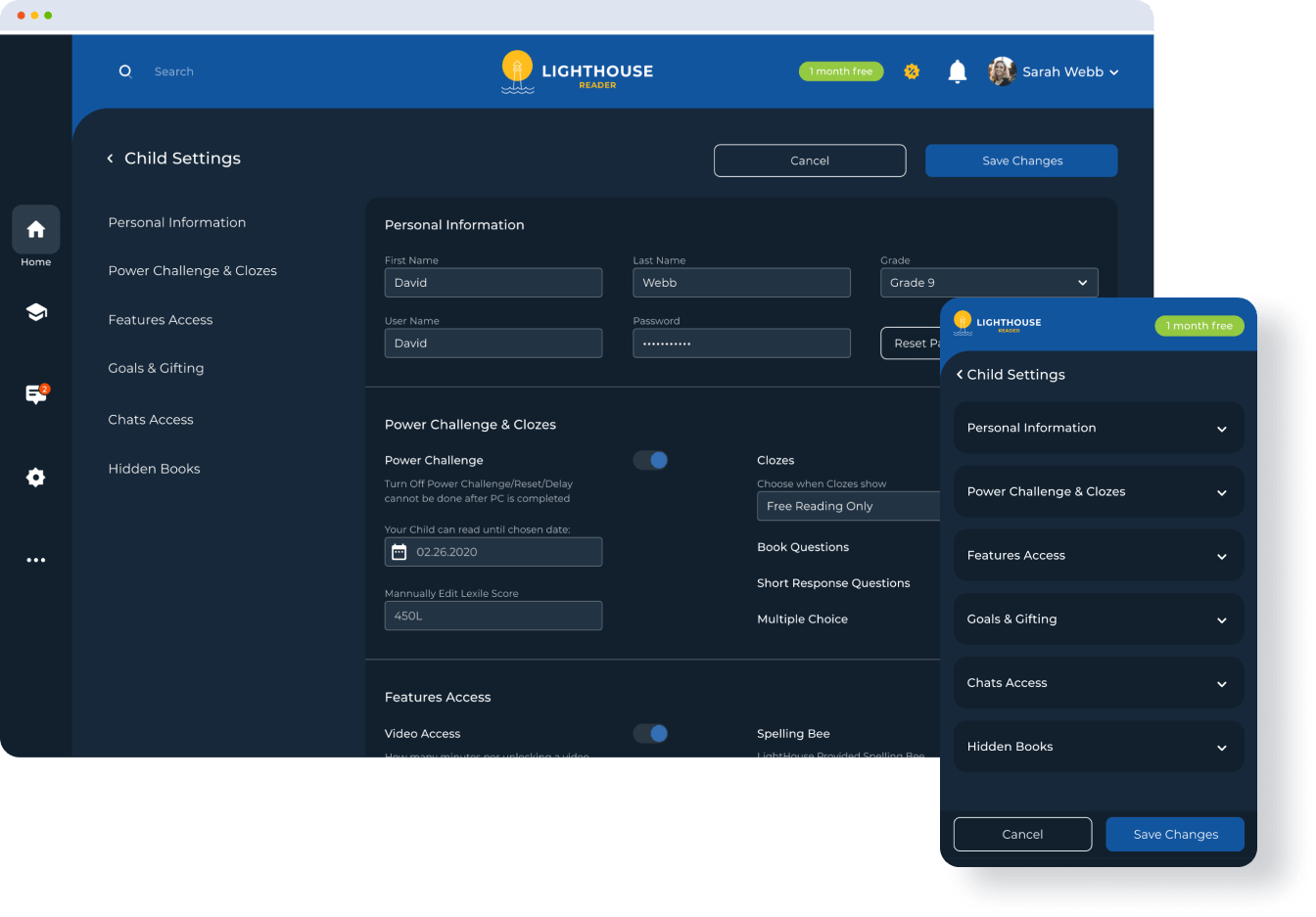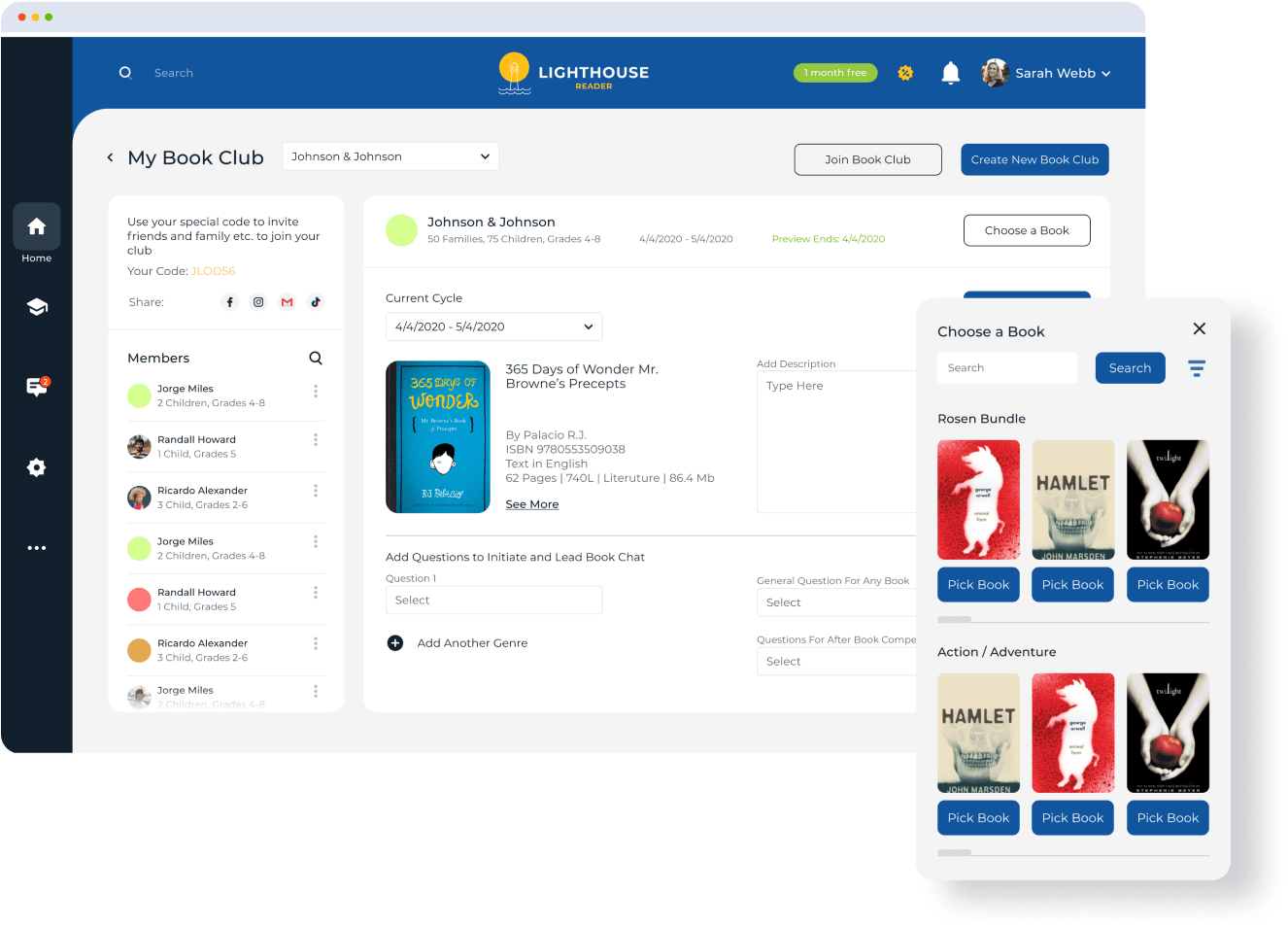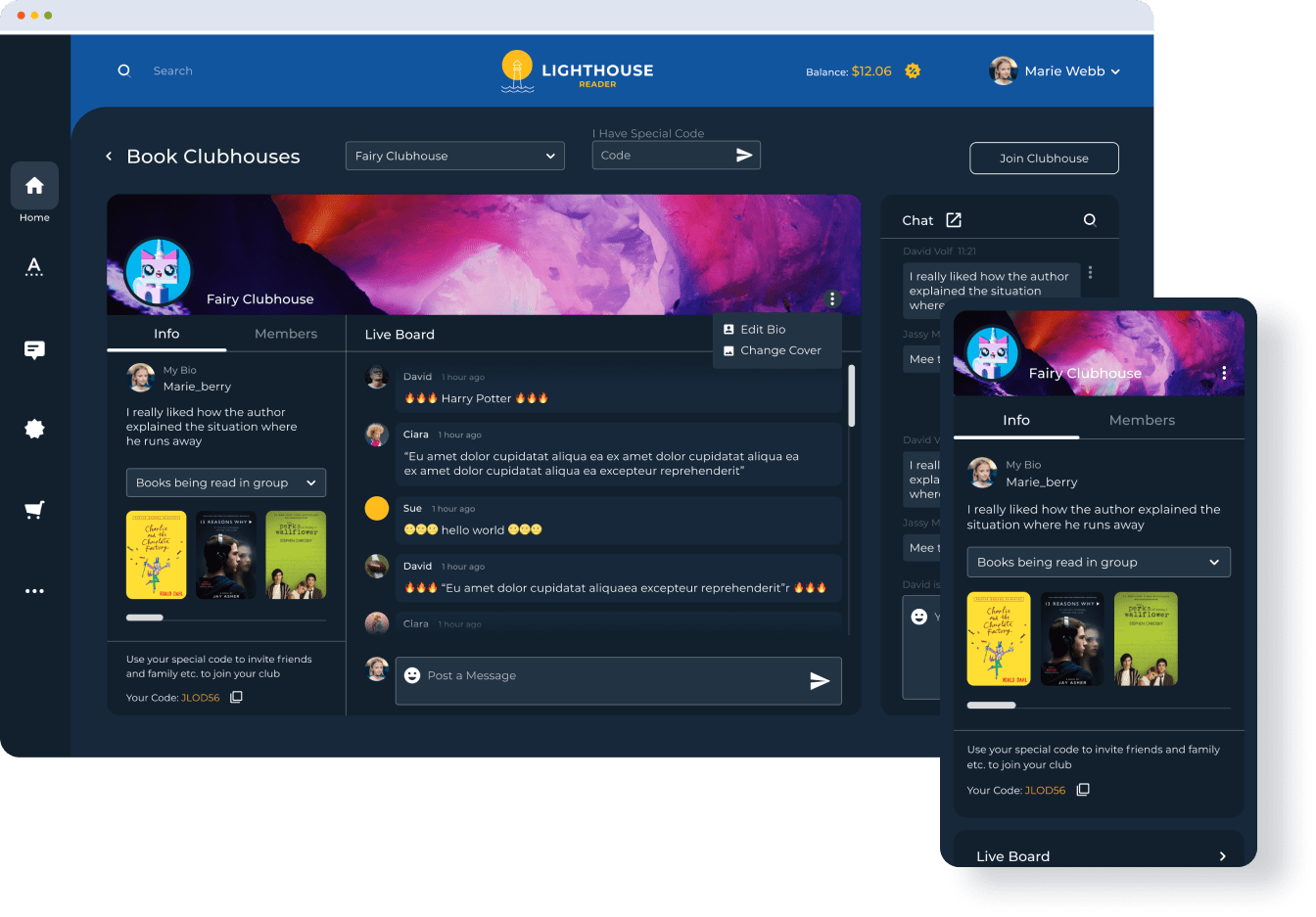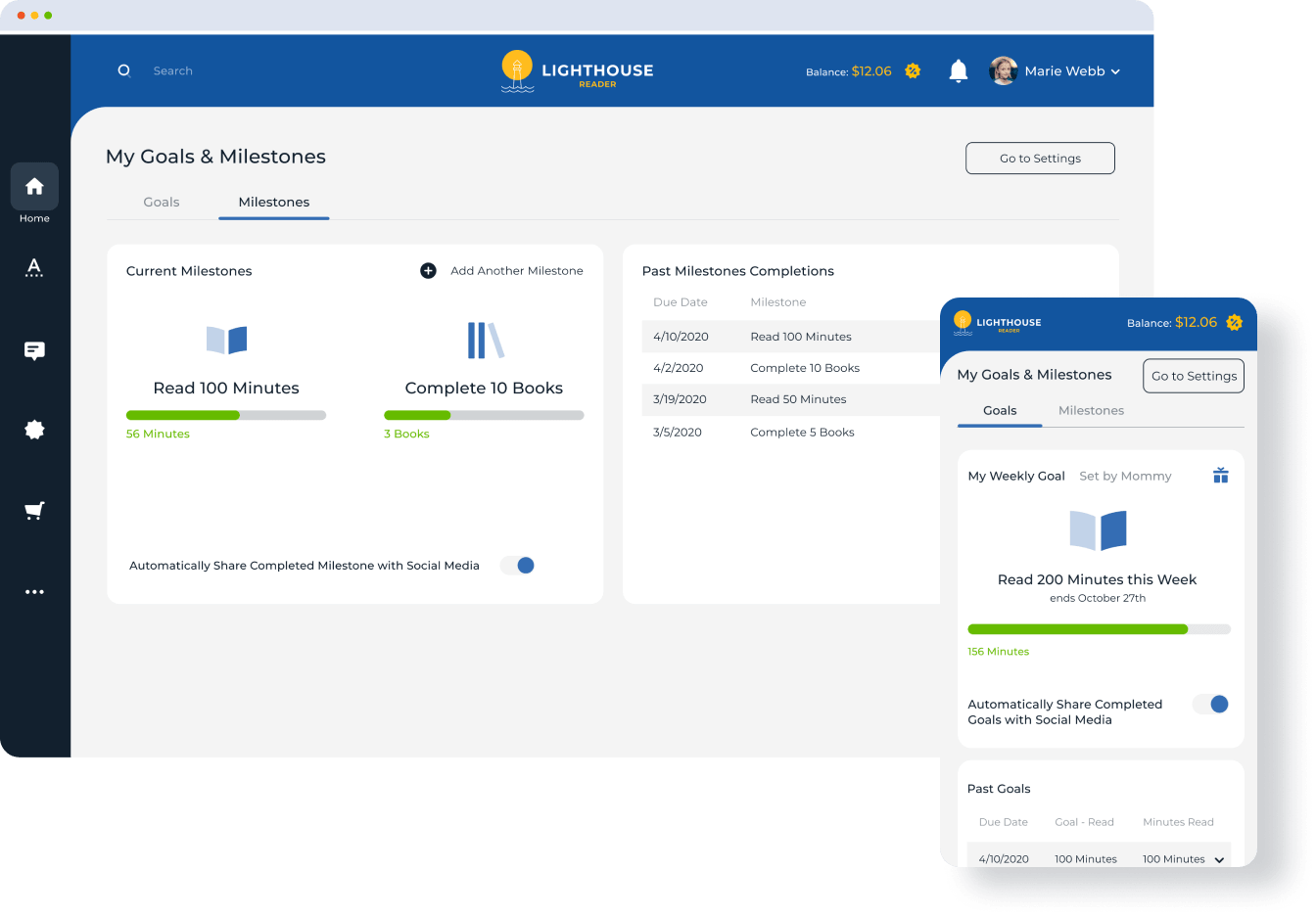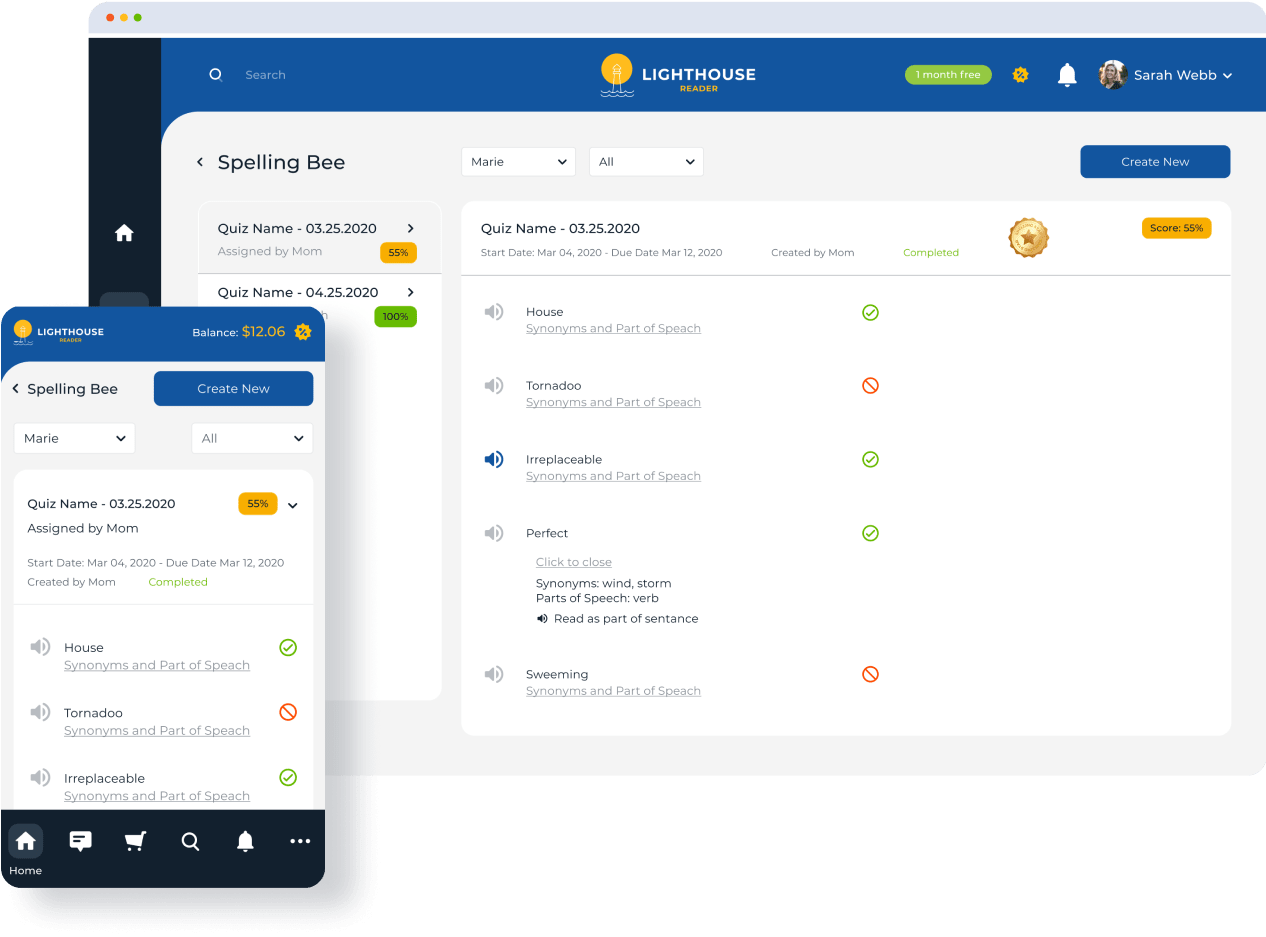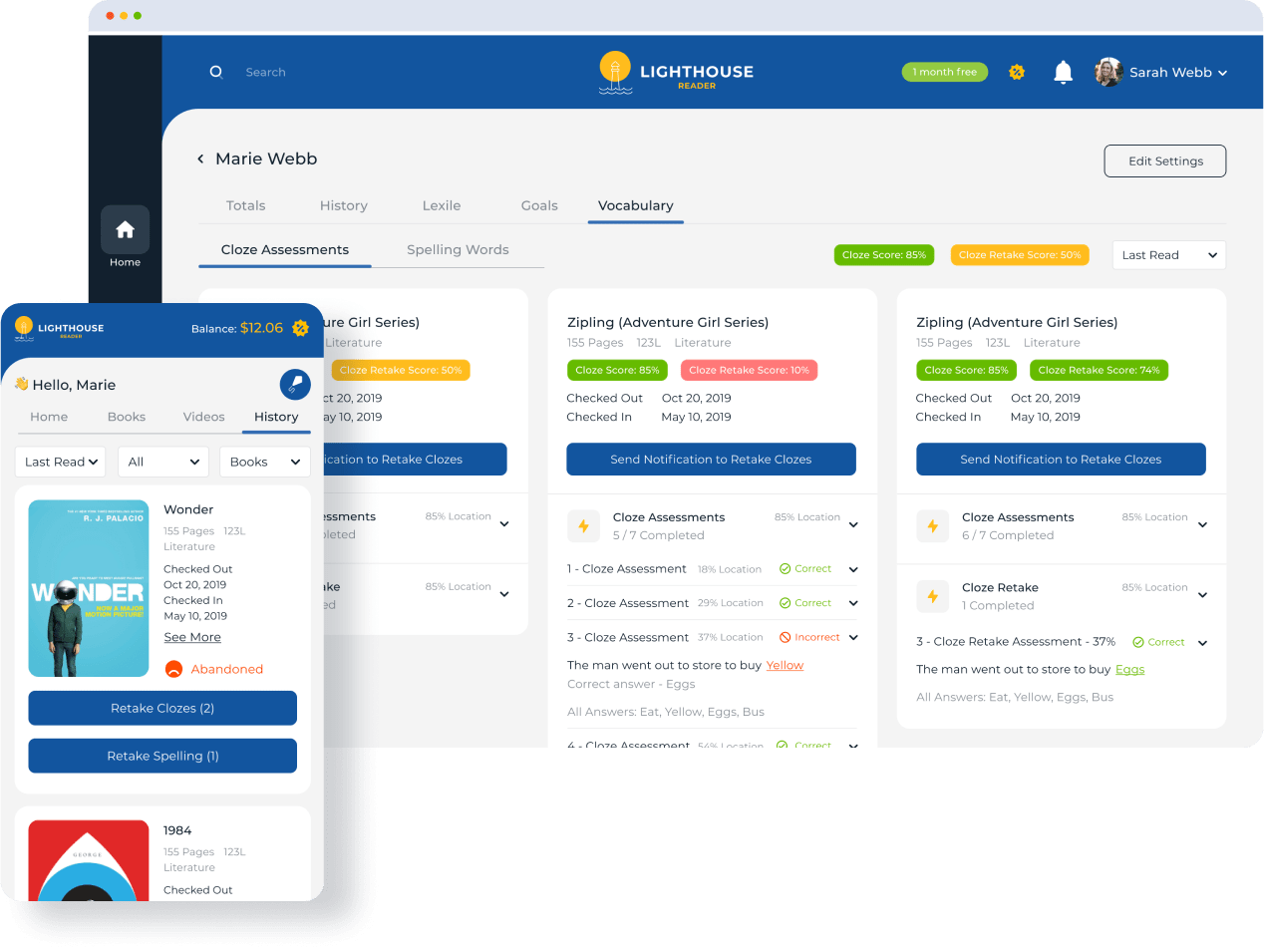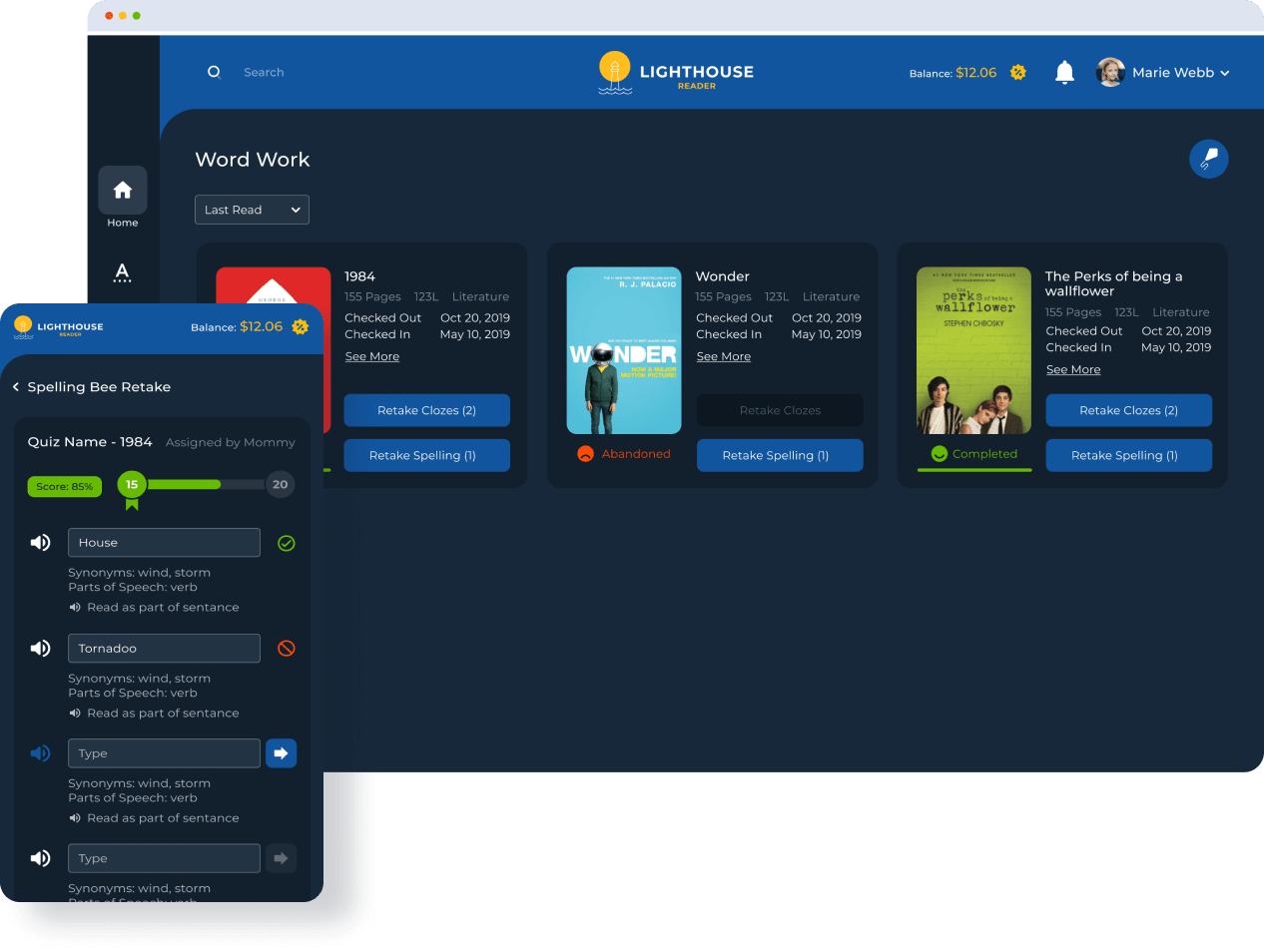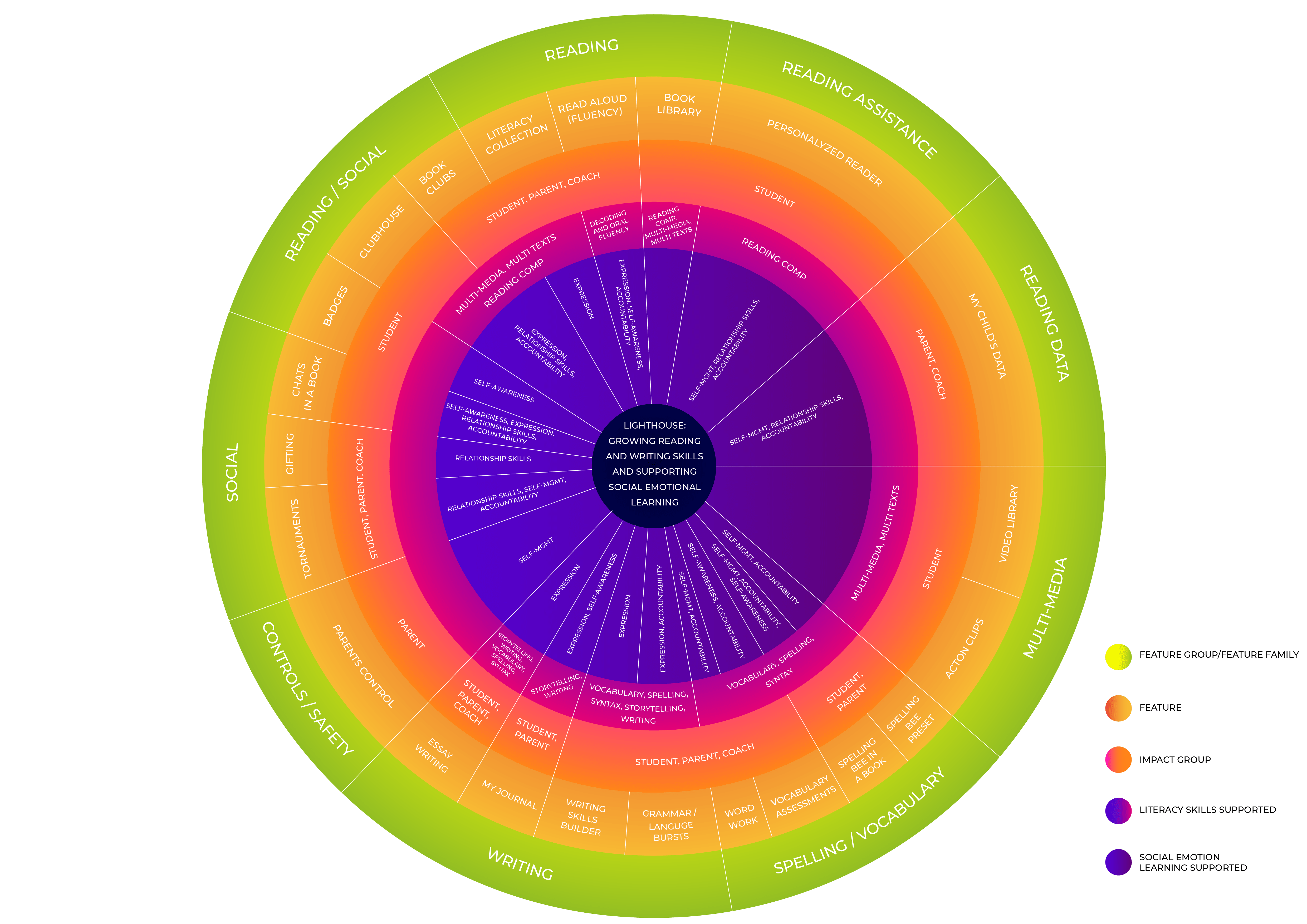You can download the PDF-version of this page. Just click the button below
DOWNLOADPROVEN IN SCHOOL BUILT FOR HOME


LightHouse in Partnership with digital education pioneer, TBD Media, provides a comprehensive and compelling, multimodal, educational e-reader, powered by LightSail Education’s globally acclaimed K12 literacy platform.
Sound Pedagogy · Compelling Content · Family-Centric · Mobile Edtech
Global estimates suggest 774 million people aged 15 and older are illiterate. 45 million Americans are classified as “functionally illiterate,” meaning they cannot read beyond a fifth-grade level. The educational status quo does not meet the global demand to produce literate 21st century citizens. More than ever, families are actively seeking alternatives and supplements to grow their children to be successful in a competitive academic and pre-professional climate.
LightHouse supports this proactive parental engagement by honoring the need for rich and diverse content, a user friendly and responsive platform, a secure learning environment, and structures rooted in proven pedagogy.
Partnering with LightHouse Reader presents a globally conscious and commercially sound and scalable opportunity. Whether supporting the aspirations and literacy development of those most in need or the burgeoning global market for consumer edtech, the platform's inherent functionality and flexibility supports multiple business and revenue share models across B2C, B2B2C, social enterprise, and educational SaaS. Options for localization language, content, and branding provide global relevance and partner appeal.
| For Publishers | For Country Partnerships and Resellers | For Association and Parent Referral Networks | For Donors, Public Benefit, and Governmental Organizations | |
|---|---|---|---|---|
|
|
|
|
|
| E-COMMERCE |
|
|||
| BRANDING |
|
|||
| LOCALIZATION |
|
|||
| BOOK ENCRYPTION |
|
|||
FOR PARTNERS
LightHouse: A Holistic Literacy Solution for The 21st Century Parent
Consumer Educational E-Reader Market: Parent Personas
| Struggling Readers | Homeschool | Reading Minded Families | Quality Screen Time | Edutainment |
|---|---|---|---|---|
|
|
|
|
|
LightHouse’s Key Integrated Modules Fostering Literacy Growth and Independent Learning
| Adaptive Reader and Library | Personalized Reader | Book Chat, Book Clubs, Clubhouse & Tournaments | Fluency Builder | Spelling Bee | Adaptive Writing Builder | Parent Controls and Security |
|---|---|---|---|---|---|---|
|
|
|
|
|
|
|
An engaging and complimentary library, brought to life with exclusive video footage from globally acclaimed TBD Media. The integrated e-bookstore features titles from the world’s leading publishers.
| Complimentary Books | Integrated Video | LightHouse Shared Library Collections | Globally Recognized Content Partners |
|---|---|---|---|
|
|
|
|
The rich, multimodal educational resources from LightHouse enable customized and Lexiled libraries for all ages and abilities.
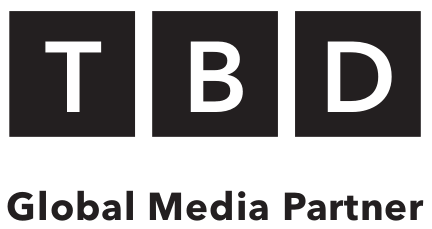
The TBD Media has been cultivating and educating audiences since 1922. TBD Media's Factual Programming Archive is amongst the greatest in the world, encompassing a wealth of subjects with contributions from distinguished experts. Exclusive interviews with thousands of history and news makers, as well as global coverage of major historical events.
The demand for digital video for learners is dramatically growing across all disciplines — from art and science, to literature and world languages, to history and economics and more. TBD Media is helping to pioneer the new digital reality — a world in which books and learning programs are enhanced and improved by digital media to stimulate learning.

FEATURE AND EDUCATIONAL BENEFITS
LIGHTHOUSE: BUILDING TOMORROW’S GLOBAL CITIZENS
| FEATURE GROUP | FEATURE | DESCRIPTION OF FEATURE | EDUCATIONAL VALUE TO THE FAMILY | BENEFIT FOR CHILD | BENEFIT FOR PARENT | BENEFIT FOR COACH | PROBLEM SOLVERS / CRITICAL THINKERS | CONSIDERS PERSONAL EXPERIENCE AND/OR WORLD VIEW | SELF-AWARE/ SELF-MONITORING | STRATEGIC / DELIBERATE CHOICES | INSPIRES CONFIDENCE |
|---|---|---|---|---|---|---|---|---|---|---|---|
| Reading/ Library | Book Library | Book suggestions address user's Lexile TM , interests, and prior reading habits. | Take the “guess work” out of selecting the most impactful texts. The platform’s strategic content visibility (filters) promotes “reading without boundaries.” Supplement the library with “for purchase” text and video bundles from globally renowned publishers/producers. |
✓
|
✓
|
✓
|
✓
|
✓
|
✓
|
✓
|
|
| Library Collection | Customizable and thematic texts, videos, and Action Clips. Content appears on a featured screen for a period of time. | Promote the “now” content that speaks to social movements, cultural holidays, and current global events. |
✓
|
✓
|
✓
|
✓
|
✓
|
✓
|
|||
| Read Aloud (Fluency) | This assignment can be used to gather metrics about the user's oral reading ability (i.e. decoding, retelling, and Word Correct Per Minute (WCPM). | Some children lack confidence on assessments. This low-risk, choice driven fluency assignment is designed by your child for your child. |
✓
|
✓
|
✓
|
✓
|
|||||
| Reading Assistance- Accessibility | Personalized Reader | LightHouse’s 60 customizable tools adapt to a user's needs. Perfect for users with ADD/ ADHD, Dyslexia, Autism, Cortical Visual Impairment (CVI), and a wandering mind. | Don’t highlight a struggling reader’s challenges; instead, provide adaptive tools to discretely design and control their optimal assisted reading experience. |
✓
|
✓
|
✓
|
✓
|
✓
|
|||
| Writing | Writing Skills Builder | Assesses a user's language and writing skill knowledge using 4 types of questions. | You can use student writing performance data to prioritize skill gaps without treating all language/writing skills with the same level of urgency. |
✓
|
✓
|
✓
|
✓
|
✓
|
|||
| Informal Writing Bursts | Quick and engaging writing “burst” opportunities resemble social media posts, comments, Tweets, hashtags, and much more. | 21st century writing exercises validate changing communication demands and skills. These activities promote creativity and imagination. No-risk, non-evaluative writing builds relationships between you and your child. |
✓
|
✓
|
✓
|
✓
|
✓
|
✓
|
✓
|
||
| Book Report | Choose from numerous templates to structure the report content. Users can be assigned a text or enjoy free choice. Assessment is specific and direct with rubric template options. | Help your child develop critical writing skills with supportive template structure. Free choice book selection grows independence and engagement. Propel a topic by assigning a book. |
✓
|
✓
|
✓
|
✓
|
✓
|
✓
|
✓
|
✓
|
|
| Research Report | Grow a user's knowledge about a topic with a template-structured, inquiry-driven research experience. | Asking effective questions and answering questions accurately and thoroughly prepares your child for college, career, and beyond! |
✓
|
✓
|
✓
|
✓
|
✓
|
✓
|
✓
|
✓
|
|
| Essay Writing | Multiple template formats promote and support the primary modes of writing. Support recursive writing cycles for maximum skill growth. Rubrics provide specific criteria for evaluation. | 21st century success in college and career, requires your child to be able to sustain writing expression and modify the style and contents to address different audiences and purposes. |
✓
|
✓
|
✓
|
✓
|
✓
|
✓
|
✓
|
||
| Multimedia | Video Library | Each user will have access to a personalized educational video library. LightHouse will suggest topics based on the Initial Interest Inventory and prior reading. | Edutainment is a modern way of increasing engagement. Parents have the final say to moderate how much and when students enjoy videos. |
✓
|
✓
|
✓
|
✓
|
||||
| Action Clips | Make books and assignments come alive with GIFS from the LightHouse Library. | Learning can and should be fun for your child. |
✓
|
✓
|
✓
|
✓
|
|||||
| Parental Controls/ Safety | Parental Controls | These settings allow parents to stay involved and be aware of what is accessible to their child. LightHouse honors a parent's need to create and set technological boundaries. | You know what is right for your child. You can determine what aligns with your family's beliefs/values/world view. Create a safe space fro your child to explore texts. |
✓
|
✓
|
✓
|
|||||
| Assessments | My Child’s Data | LightHouse calculates 100 data points to reflect the user's performance. Data is visible on all connected profiles. | Data tells a story. Your child’s story (talents and challenges) is unique. Use their performance data to create a supportive and rigorous learning environment to help them be their most successful learner. |
✓
|
✓
|
✓
|
✓
|
✓
|
✓
|
||
| Social | Gifting Parent | Increase student motivation, drive, and goal completion by offering incentives. | Show your child that their success holds a value intrinsically and extrinsically. Instill a culture of success by helping your child set and reach goals. |
✓
|
✓
|
✓
|
✓
|
✓
|
|||
| Chat With Users in- Book | Users are able to discuss a text with other readers or those who are in their Book Club. Chat features are goverened by the Parent Controls feature. | Build cultural awareness, sensitivity, and relationships by using books to bring people together. |
✓
|
✓
|
✓
|
✓
|
✓
|
||||
| Tournaments | Tournaments can be time consuming to mange, instead let LightHouse manage them. Students can compete in MInutes Read and Books Completed categories. | In the worlds of gaming and sports, we are all about tournaments, let's extend this love to the world of reading. |
✓
|
✓
|
✓
|
✓
|
✓
|
||||
| Reading/ Library and Social | Badges | Badges are LightHouse’s gamification that encourages users to explore new genres, succeed in a Spelling Bee, and score on/above average on embedded assessments. | Spark your child's motivation with computer-assigned incentives. LightHouse is your child's personal literacy cheerleader. |
✓
|
✓
|
✓
|
✓
|
||||
| Book Clubs | Book Clubs facilitate the discussion of a text. Book Clubs are part of the Parent Control feature. | There are distinct skills associated with academic discourse. Help your child refine these skills in a structured and regulated environment. |
✓
|
✓
|
✓
|
✓
|
✓
|
✓
|
|||
| Clubhouse | A Clubhouse is a user's personal reading domain. The Clubhouse creator moderates the discussion. Clubhouse is part of the Parent Controls feature. | Teach your child how to respect something they control. Of course it is centered around reading, but it can and should be fun as well. |
✓
|
✓
|
✓
|
✓
|
|||||
| Vocabulary/ Spelling | Word Work | Incorrect Clozes from (fill-in-the-blank) embedded assessments determine which words populate a user's Work Work, their personalized vocabulary acquisition tool. | Word Work provides your child a second chance, an opportunity to learn from their mistakes and take ownership over vocabulary. LightHouse helps your child grow vocabulary from vocabulary. |
✓
|
✓
|
✓
|
✓
|
✓
|
|||
| Spelling Bee in a Book | The user will receive 5 specially selected Lexile-leveled Spelling Bee words to practice and take an assessment on. | An increased vocabulary provides your child an edge in reading and expression. |
✓
|
✓
|
✓
|
✓
|
✓
|
||||
| Vocabulary Assessments | Vocabulary Assessments use incorrect responses from a Spelling Bee to grow skills such as context cluing and using synonyms. | Help your child learn strategies to grow their vocabulary. |
✓
|
✓
|
✓
|
✓
|
✓
|
✓
|
|||
| Spelling Bee Pre-Test | The Pre-Test will determine what words are worth intensive review before the assessment and which the user already knows. | It is possible for a child to read at one level and spell at another. Use Spelling Bee Pre-Test to monitor engagement and performance. |
✓
|
✓
|
✓
|
✓
|
✓
|
READING AND ACCESSIBILITY FEATURES
READER AND ASSESSMENTS
LightHouse Reader provides students with an authentic reading experience while collecting data through embedded Cloze (fill-in-blank) assessments.
These assessments are placed through a special engine created in partnership with MetaMetrics. As students read, a word that is hidden by a box will be placed in the story. Students use their word knowledge and comprehension to select the best-fit word from the 4 options. Cloze items appear every 1 to 2 pages in all English titles except plays, poetry, and graphic novels.
Clozes allow LightHouse Reader to monitor a child's Lexile® measure, helping identify where that child is on the spectrum of reading comprehension. The more time a child spends reading and answering Cloze items, the more frequently LightHouse Reader adapts Lexile® levels to reflect a child's level of comprehension.
FLUENCY ASSESSMENTS
Fluency Assessments is an extremely powerful feature that helps a child with word pronunciation, spelling, and reading fluency. A parent or tutor can assign read-aloud and writing assignments, as well as gauge progress with on-demand data.
Running Record scores are based on words correct per minute (WCPM). As you listen to your child read, you can mark inaccuracies.
An alternative grading tool is a rubric. Use LightHouse provided Fluency Rubrics or create your own.
PERSONALIZED READER
Imagine your child with reading struggles being able to enjoy any book! With over 21 features focused on helping children who struggle with Dyslexia, ADHD, ADD, Autism, vision impairment, Cortical Vision Impairment, mind wandering and other reading struggles, LightHouse Reader will do just that. Bring the joy back to reading!
- Key features include:
- • Line focus and highlighting
- • Block words that were already read or those about to be read
- • Text-to-Speech and karaoke modes
- • Modify text format and color
- • And many more...
BUY BOOKS
Access to purchase from over 150,000 books including popular titles like: Diary of a Wimpy Kid, Wonder, A Series of Unfortunate Events, and many others. Many selections align directly with curriculum like Sonlight, ABeka, and Bookshark, to name just a few. Children are able to begin reading as soon as the purchase is complete.
- • 150,000 trade titles
- • Books for all ages and levels
- • Award winning books and publishers
- • Buy credit for your child to select titles
- • See your child's suggestions and book requests
READING AND ACCESSIBILITY FEATURES
HOMEWORK
Forget the days of chaotic homework, when your child says, "I can’t find the paper," or, "The dog ate it." LightHouse Reader provides a simple homework platform with minutes read, and time-on- task tracking, and gamification.
Our homework tool encompasses both one-time and repetitive assignments. A parent can choose to assign specific books or a total of required minutes to read.
When the child reads during homework time, the platform will keep track of their reading minutes and inform them once they have completed their homework assignment.
Badges will be given based on successful completion.
LIBRARY COLLECTIONS
A Library Collection is a group of books, videos, and action clips centered around a particular topic or central theme. LightHouse Reader contains many Library Collections; however, a parent can also put together their own to share with their children.
This feature is particularly useful when creating unit studies or for thematic learning because it allows a parent to curate content of their choosing and present to their child for self-study. It also works perfectly for seasonal topics. You can assign a collection to your child for a certain time period, after which it expires and is removed from your child’s Library.
When you create a Library Collection, first, pick a theme, write a description, and choose a cover image for the collection. Next, gather your content! Select from among the thousands of books, videos, and action clips -- all searchable by genre or keyword -- to find the material that fits your child and your theme and add it to your collection.
Then, you can engage your child on the content you’ve collected in two ways. First, you can write “essential questions.” These are designed to foster a thought provoking mindset as your child begins to explore the books and videos. Secondly, you can create a quiz for your child to take, if they wish, when they are finished with the collection.
When your collection is complete, pick the child or children to whom you wish to assign it, and choose whether to share it indefinitely or for a certain period of time. If you choose to have the collection expire, it will still be available in the parent dashboard to share again later.
Additionally, each collection, when created, has a unique invitation code that you can use to share your collection with other families. This makes it easy to create a themed collection for your co-op so everyone can study together. Collections can also be shared in the Book Club feature of LightHouse Reader for the same purpose.
MY LIBRARY
Building your Library within LightHouse Reader is one of the most exciting aspects of the platform. When you first purchase LightHouse Reader, you receive twenty free books to begin your library. Next, just like your bookshelves at home, you begin curating individual titles and bundles of books perfectly suited for your homeschooling needs from tens of thousands of available books. A parent can also add funds to a child’s online wallet, allowing them to make book purchases, or a child can send a request to their parent for a particular book they would like to read.
The first time your child logs on into LightHouse Reader, they take a survey about their reading interests. Based on this survey, LightHouse Reader prioritizes the genres and topics your child will see first. Your child’s library will suggest books that are popular on the platform and relevant to your child’s interests or related to other books they have read. A child can “check out” up to ten books at a time, which will be displayed in their Continue Reading section. Students can curate their own virtual bookshelf to read in the future with the My List feature. A child’s library is dynamic, easily navigated, and customized to each individual, guiding your child to the perfect books for their interests and reading level. You can sort libraries by genre, fiction or nonfiction, and Power Texts (books within 200 points +/- of a child’s Lexile® reading score). Each child's Library will look different because it will be personalized to them. And in multiple places throughout the platform, such as when opening and closing a book, related content will be suggested, encouraging your child to continue exploring topics and reading further.
READING AND ACCESSIBILITY FEATURES
LIGHTHOUSE SHARED LIBRARY
In addition to the opportunity to curate a personal library by purchasing books from the e-bookstore; parents also have access to a shared complimentary library that includes educational articles on current events, social issues, science, nature and much more.
PARTS OF SPEECH
LightHouse Reader provides an easy and simple format for viewing all parts of speech words in a text. Turning on the feature will show an easy to read menu with all parts of speech words in the viewed text.
Each parts of speech section is color-coded and highlighted in the text so the child can match the word in the text.
LIGHTHOUSE’S IMPACTFUL WRITING FEATURES
WRITING SKILLS BUILDER ASSIGNMENT
Writing Skill Builder allows parents to quickly and easily build assignments which help children improve their writing skills and is evaluated by LightHouse Reader.
Writing Skill Builder assignments teach a multitude of skills on topics such as sentence structure, word usage, capitalization, parts of speech, prefixes, and even reasoning skills - all tailored to the grade level the parent has selected.
Based on the grade a parent selects, a list of possible questions is offered, and a parent can sort this list by skill type, selecting the perfect questions for their child. For example, a parent may decide to focus on capitalization and punctuation questions, or sentence structure and word usage.
There are many different styles of questions a child can be offered as well, such as multiple choice, multi-select (more than one possible answer), drag-and-drop, and fill-in-the-blank, all of which will be automatically graded by LightHouse Reader.
As a child works through the assessment, several child-friendly features help guide them. A child is able to choose a voice and adjust the font type and size for their preference. Their instructions appear in the sidebar throughout the assessment so that they are always close at hand. They are given two chances to answer each question correctly, and can always view an explanation of why an answer is the right one. And an on-screen roll shows them their progress as they work their way through the assignment. Book Reports are fundamental in helping your child build their writing skills and learn summary and analysis. Book Report allows parents to easily assign books from their library for their child to write a report on.
A child’s data on a Writing Skill Builder assignment is included on the Totals tab of both the parent and child dashboards. Their progress and outcomes on these assignments is always provided to the child as a tool to help them understand where they are and chart where they would like to be. In addition to receiving their data, children also earn fun motivational badges for completing all assignments, including Writing Skill Builder assessments.
BOOK REPORT
WRITING FEATURES
INFORMAL WRITING WORKSHOP
Informal Writing Workshops are more of a fun game than an assessment, but that doesn’t mean they don’t provide tremendous value as a writing tool.
These non-gradable assignments can either be assigned by a parent or a child can choose to complete them when they’d like. And that is how the workshops were designed - as real-life writing encounters that children will actually want to engage in.
Informal Writing Workshops provide grade-appropriate scenarios for children to experience writing in an organic and relatable way, through mock social media posts, fun and creative free writing prompts, and even hashtag challenges. Kids know that you don’t write essays in the real world every day, but asking them to compose a thoughtful Tweet® on a current event or comment on a friend’s social media post makes the need for writing real.
While these assignments are not graded, to encourage fun and active participation, a parent can like or comment on a child’s responses to provide encouragement and feedback.
MY JOURNAL
My Journal is a space especially for your child’s personal notes and thoughts. It can be both a reading journal, integrated with their library, and/or a regular diary.
As a reading journal, My Journal gives your child the ability to record their thoughts, questions, and favorite quotes directly from the books they are reading. From any book, they can access their Journal and see all their entries. From there, they can create a new entry, edit previous ones, select text from the book to quote, and include citations with the click of a button.
But their My Journal entries do not have to be associated with their reading. Children can create entries about anything from how their day went, to what they did on vacation, to their personal thoughts and dreams.
MULTIMEDIA FEATURES SAFETY FEATURES
ACTION CLIPS
Action Clips are thousands of high-quality, 5 to 30 second, audio-free, educational GIFs embeded in the platform.
While videos bring context to books as a whole, Action Clips are an additional layer of contextual imagery designed to bring individual words or phrases to life. Imagine a child is reading a book about penguins, and when they come to a sentence that references a penguin fishing - instead of a static picture - they see an amazing clip of a penguin diving and catching a fish.
Action Clips allow children to actually experience what they are reading. Additionally, because these clips are audio-free — literal moving pictures — they are unobtrusive in a multi-student learning environment.Action Clips are not only shown in books, but are accessible from a child’s video library as well, and they are associated with keywords, which means they’re searchable and linked to other related content.
MY VIDEOS
Video has the ability to engage, educate, and entertain like nothing else does. That is why LightHouse Reader places that power in the hands of parents, allowing them to integrate educational video content with reading and writing assignments to enhance their homeschooling curriculum.
On a child’s Dashboard, their video library appears next to their reading library. Here, they can access any videos they have unlocked, watch or continue watching, browse videos by genre, see video suggestions based on their interests and reading activity, and add videos to their personal list for future viewing. The high-quality videos are interconnected with your child’s reading library. When a child reads a book, related video content will be suggested and vice versa.
As with any other LightHouse feature, videos are entirely at a parent’s discretion. You, the parent, set the parameters for how many videos a child may unlock and which ones you feel are suitable. You may specify that your child must read a certain number of minutes to unlock a video, allow them free access, or turn off the video feature completely.
PARENTAL CONTROLS
With technology constantly changing, the need for parental control is more necessary than ever before. As parents, we want our children to reap the benefits of modern technology while staying protected. LightHouse Reader provides a parent full control and oversight on all of its features.
- A parent can:
- • View all book chats, turn off chats, remove a child from a chat
- • Limit chat to Book Clubs and Clubhouse
- • Turn off social media sharing
- • Hide books from your child’s library
- • And much more…
SOCIAL FEATURES
BOOK CHAT
How do we combine the 21st century with reading? How can we bring pen pals and book clubs into the modern era? Enter LightHouse Book Chat. Your child will instantly connect with children their age and level who are reading the same books. Children can chat about the books they love in a safe, parent-controlled environment.
- • Chat with any child reading the same book
- • Find children reading other books
- • Chat with your child while they are reading
- • Control who your child can chat with
- • See all chats your child is part of
BOOK CLUBS
When reading a good book, we have all experienced the feeling of wanting to share our thoughts and discuss the book in detail with others. With LightHouse Book Clubs, your child can do just that.
Any parent can create a Book Club or search for an existing Club to allow their child to join. When a parent creates a Club, they have full control over who they allow to participate. Together, the Club will read a book chosen by the creating parent and engage in chats geared towards discussion of the book. LightHouse reader provides questions to help lead the discussion.
The Book Club chats are designed for parents and children alike. Clubs can be set up as a one-time session, discussing a single book, or for multiple sessions with multiple books and preset cycles.
MY CLUBHOUSE
Introducing LightHouse Clubhouse. A Clubhouse is a child’s domain, and the child is the king or queen of their own literacy kingdom.
How does this work?
A parent creates a Clubhouse and the child invites their trusted friends with parental approval. Then, the children get to chat about any book or topic in a fun, safe, parentally supervised virtual Clubhouse.
SOCIAL FEATURES
GOALS & MILESTONES
- • Goals are set by the parent and can be daily, weekly, or monthly. The parent can add gifting with personal messaging. Gifting allows a parent to attach a gift based on goal completion.
- • Milestones are set by the child and are incremental. The child is encouraged to set miletones for minutes and books read.
TOURNAMENTS
Everyone loves tournaments, whether you are a March Madness fan, soccer fan, or video gamer. Tournaments are fun! As a parent, you can create your own reading tournament and invite your friends to join by giving them a special code.
As a child, you can actively search for existing and ongoing tournaments and request permission to join. Tournament metrics include reading minutes, number of books read and many more. The tournament creator gets to choose prizes and badges for winners. Both parents and children will view the tournament leaderboard including ranking and totals.
SPELLING/VOCABULARY FEATURES
SPELLING BEE
An impactful tool that combines reading and spelling. Who remembers the excitement of the school Spelling Bee? LightHouse Reader matches the book's Lexile® level and provides a Spelling Bee on the same level. This ensures that your child is taking a spelling assessment at their level.
- This feature includes the following:
- • LightHouse provided assessments combined with book levels
- • Parent or Coach created assessments assigned seperately
- • Achievement Badges
VOCABULARY
As a child reads, they encounter Cloze (fill-in-the-blank) assessments and Spelling Bee assessments. The child can also retake Clozes and spelling assessments that were answered incorrectly.
The parent can then view all Cloze and spelling assessments including retakes so they can get a full view of the child’s vocabulary.
WORD WORK
LightHouse Reader’s Word Work feature does precisely what it implies: it helps your child work on vocabulary and spelling words they have missed in the course of their assignments.
Word Work is designed to prompt your child in multiple ways to review and practice problem areas. When your child exits out of or completes a book, they are prompted to retake any missed reading Clozes (fill-in-the-blanks). At the end of a Spelling Bee, they are offered the opportunity to retake incorrectly spelled words. Through book overlays, the History tab, and the Word Work tab. A child can also see which assignments require further study as they access the History and Word Work tabs.
With Word Work, you don’t have to worry that your child is senselessly practicing information they have already mastered. It is a tool that gives your child focused practice and additional targeted support specifically to areas they need to work on.
CONNECTING THE LITERACY DOTS
PERSONALIZED READER
LightSail’s Personalized Reader feature includes 60 different tools to customize the eReader and adapt it to each student's needs.
This functionality supports text access for children with ADHD, Dyslexia, Autism, visual impairments, or any child who struggles with reading and may have a wandering mind.Feature Highlights:
- • Adjustable viewing pane to see 1, 3, or 5 lines of text
- • Ability to change color and adjust the font, background, border, outlines, and more
- • Embedded scaffolds assisting the student to focus on just a few words at a time and covering all surrounding words
- • See text light up in ‘karaoke mode’ as the student reads along at their unique pace
- • Listen to the book read aloud using state-of-the art AI, choosing among many anthropomorphic voices
- • Enlarge words and track the part of speech and syllables for each
- • Research-based accommodations for students with CVI Cortical Visual Impairment, including the Roman Bubble and word streaming for any text
Designed to help struggling readers with:
- • Dyslexia
- • Autism
- • ADHD/ADD
- • CVI (Cortical Visual Impairment)
Every year, millions of people visit Egypt. Many go there just to see the amazing pyramids that the Egyptians built thousands of years ago. The pyramids are massive structures in the middle of the desert. The tallest one is almost 500 feet tall, and made of stone! But why did the Egyptians build these pyramids? What purpose did they serve? Pyramids were designed as burial tombs for Egyptian kings and pharaohs. The families could also be buried in the pyramids. The Egyptians believed that their kings were negotiators between gods and the people on Earth. This meant that kinds received the greatest respect from all of the Egyption people. Egyptians wanted to treat them well, even in death. Egyptians also believed in life after death. They wanted to make sure that kings were comfortable in the next life. That is why they made their kings into mummies to preserve their bodies after they died. They buried kings with gold and valuables. They wanted to make sure the kinds had everything they would need in the next life. A pyramid was the last part of the burial ritual for kings. The pyramids showed the importance of the kings. The first pyramid was built 4,500 years ago in Saqqara, Egypt. The first pyramids looked a little different from the ones that we know today. They were not smooth on the sides. They had steps going up all sides. The pyramids were built by stacking steps on top of each other. The pharaoh Sneferu created the style of pyramid that we see today. His pyramids were built with smooth sides all the way up. The smooth sides were important. They symbolized the rays of the sun. The Egyptians also believed that the smooth sides would allow the souls of the kings to ascend into heaven. Sneferu’s son, Khufu, built the Great Pyramid in Giza. It is the most famous of the pyramids. People still visit it today. For 4,000 years it was the tallest man-made structure in the world! Building the pyramids took a very long time. The Egyptians did not have construction equipment. They did not have electricity. The wheel had yet to be invented! The pyramids required a lot of workers. 20,000 men contributed to the construction of the Great Pyramid of Giza! The pyramid had 2.3 million limestone and granite blocks on the outside. Each one weighed over 2 tons! Inside, there were many chambers and passages. It was like a mansion. That is why construction of the Great Pyramid took over 20 years. Eventually, the Egyptian culture lost some of its wealth and power. As that happened, fewer and fewer pyramids were constructed. Today, the insides of the pyramids are mostly empty. Over the course of time, grave robbers took the valuables from the inside of the pyramids. The outsides of the pyramids are still intact. They are amazing to see. The pyramids are still some of the most impressive man-made structures in the history of the world. Maybe you will visit them someday!
Independent research indicates that Lightsail works!
Students were very positive about LightSail:
- 82% of students indicated that LightSail was easy to use and navigate.
- 84% responded that reading books on LightSail was more enjoyable than reading printed books.*

EFFICACY STUDY
17 Low-Performing Middle Schools
EXILE GROWTH VS. DAILY READING MINUTES NYC DOE
